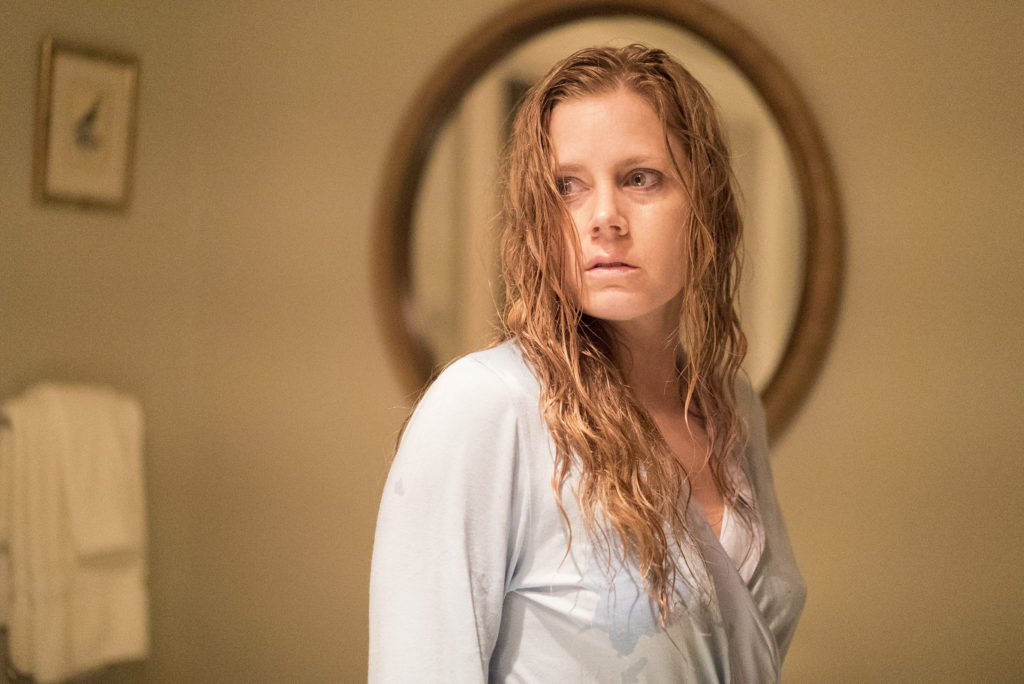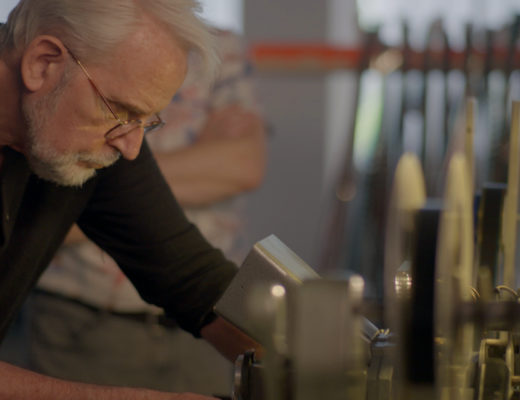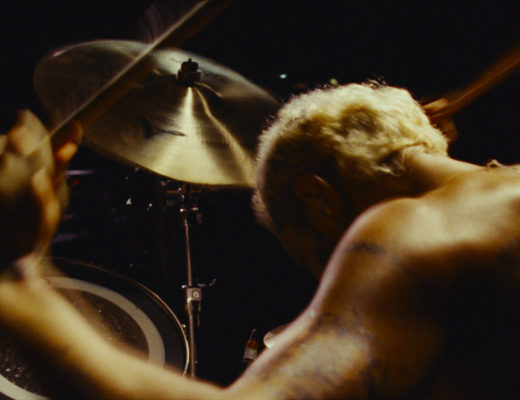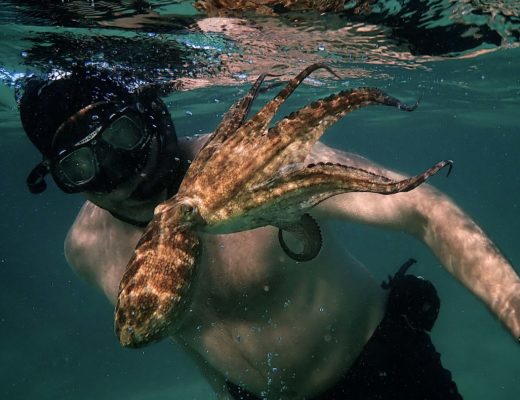Rarely do we get the directors perspective on Art of the Cut, but as we discuss two binge-worthy TV series – HBO’s Big Little Lies and Sharp Objects – we get to hear from the director, Jean-Marc Vallee (who also edits), and the rest of the editorial team on these two shows: Véronique Barbe, Dominique Champagne, Justin Lachance, Maxime Lahaie, and Émile Vallée. (Editor David Berman was unable to participate.)
Jean-Marc Vallee was the editor and director of Dallas Buyers Club, for which he was nominated for an Oscar for Best Editing. He won an Emmys for both editing and directing on Big Little Lies. Was nominated for an Emmy for Sharp Objects and was nominated for ACE Eddies for both Sharp Objects and Big Little Lies, among dozens of other awards.
Veronique Barbe has been nominated for ACE Eddies, Canadian Cinema Editors awards, and Emmys for her work on both Sharp Objects and Big Little Lies. Her filmography also includes the feature film, The Rest of Us, and numerous TV series and specials.
Dominique Champagne has been nominated for ACE Eddies and Canadian Cinema Editors awards for her work on Sharp Objects. Her work includes numerous feature films and TV series.
Justin Lachance has been nominated for ACE Eddies, Canadian Cinema Editors awards, and Emmys for his work on Sharp Objects and Big Little Lies. His work also includes feature films and other TV series.
Maxime Lahaie has been nominated for ACE Eddies, Canadian Cinema Editors awards, and Emmys for his work on Sharp Objects and Big Little Lies. His work also includes other TV series.
Emile Vallee has been nominated for an ACE Eddies and a Canadian Cinema Editors awards for his work on Sharp Objects.
This interview is not available as a podcast.
(This interview was transcribed with SpeedScriber. Thanks to Martin Baker at Digital Heaven)
HULLFISH: How were you breaking up your duties on the film? Are you editing it more like it’s a film with a group of editors, or more like television with a group of editors?
Jean-Marc VALLEE: I wouldn’t be able to say that we’re doing like TV because I’ve only worked one way, whether it’s film or TV. We started to split the work like this on BLL and then moved on for Sharp Objects doing the same, where each episode was cut by all of the editors splitting scenes.
So if Veronique was starting with scene 1 to 10, Dominique was doing 11 to 20. Emile was doing 21 through 30. I was doing 31 to 40. Maxime was doing 41 to 50 and so on. Once an editor is done with his scenes, they’d send it over to me — the director — and then I look at it. I give notes, and once we’re happy I assemble everything.
Then we all look at it and we challenge the whole. That’s why there are all these names. There are a lot of creative brains contributing to make it work.
There is a language that everyone here has to respect and be humble to try to serve that vocabulary — that language. They have their own style but as the creative captain — being the director — I ask them to try to cut with strong perspectives with these characters because that’s how we should.
LACHANCE: You also treat it as one giant film — one project. And we didn’t lock the episodes until we all looked at every single episode. Because of that, we ended up revisiting some scenes.
Jean-Marc VALLEE: HBO allows us to work this way — like it’s a big feature film — so we soft-lock each episode, then we binge-watch everything. We adjust and polish and sometimes move stuff and make a final pass at the music also.

HULLFISH: How much of the visual style of the editing was something that you discussed upfront or was it more developed from watching each other’s work and incorporating that instead?
Jean-Marc VALLEE: At the beginning, when they all came in, I set up, “This is the language,” and then it evolved. We became more aware of what we were doing. Mainly — on Sharp Objects — it became such a “thought cut” which is an expression that Michal Zak came up with in one of his videos analyzing the editing of BLL and Sharp Objects.
It was more of a thing that we were really aware of in using this device to go into Amy Adams’s character’s head, and we pushed it and pushed it and pushed it.
It was evolving and evolving also with music because we try to be as rigorous as we can with source music — putting the music in the story and giving it a sound that feels and sounds like it’s coming from the room.
I remember a scene Dominique was cutting — she was going from Amy’s character, Camille, to Alan to another detective to Eliza’s character and she was doing some back and forth, therefore we were having the music with Amy. Music with Alan. Music with Eliza. Back and forth. It was chaos.
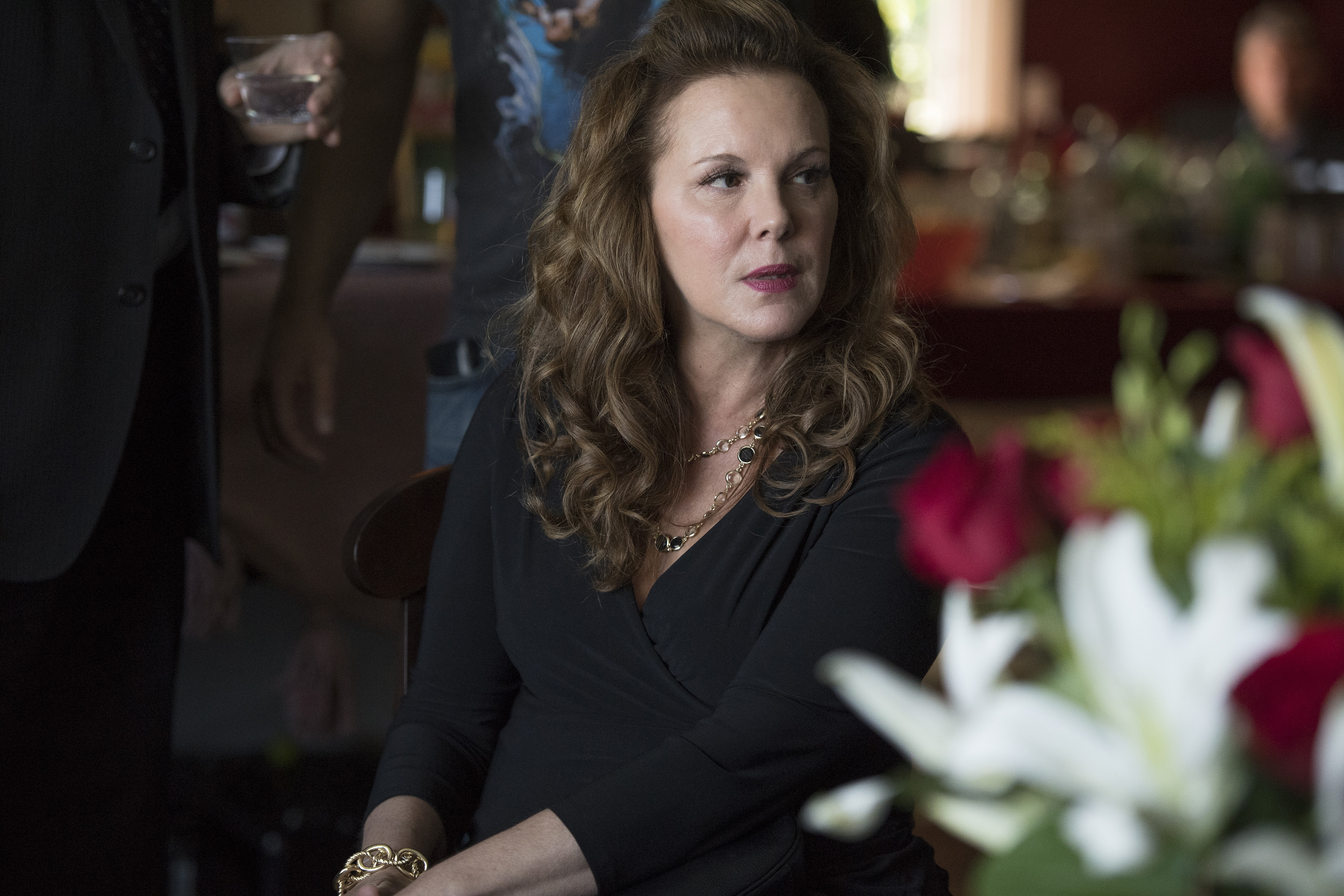 So we just kept the three tracks and blended them and made them new. This was the first time where we came up with this possibility of using more than one track at a time over a montage, and we thought, “Wow! It seems to work.”
So we just kept the three tracks and blended them and made them new. This was the first time where we came up with this possibility of using more than one track at a time over a montage, and we thought, “Wow! It seems to work.”
I ask them to do some sound design. There’s one person that isn’t on the call today — Paul Lucien Col — who’s our sound designer and he’s working with us on an Avid on a daily basis. He’s polishing the sound that we’re putting in 12 tracks. We try to limit ourselves to twelve working audio tracks and six video tracks.
Paul watches and listens to what we do and digs and digs and comes up with more perspectives — managing perspectives with the music and the levels.
LACHANCE: One of the most stimulating parts too, was the music.
And for Sharp Objects, it was also about trying to get deep into Camille’s head. If you read the book, it’s very much from her perspective. You’re hearing her thoughts and we really pushed that as far as we could.
Jean-Marc VALLEE: With Sharp Objects — the book versus the series — we came up with this idea in post of: How is she going to feel her words on her body like she does in the book? We came up with this idea — from her perspective only — every time she feels a word on her legs or breast or her stomach then we’re going to see the word for a flash and then we will cut to a narrative perspective — the storytelling perspective — or another character’s perspective, we won’t see the word.
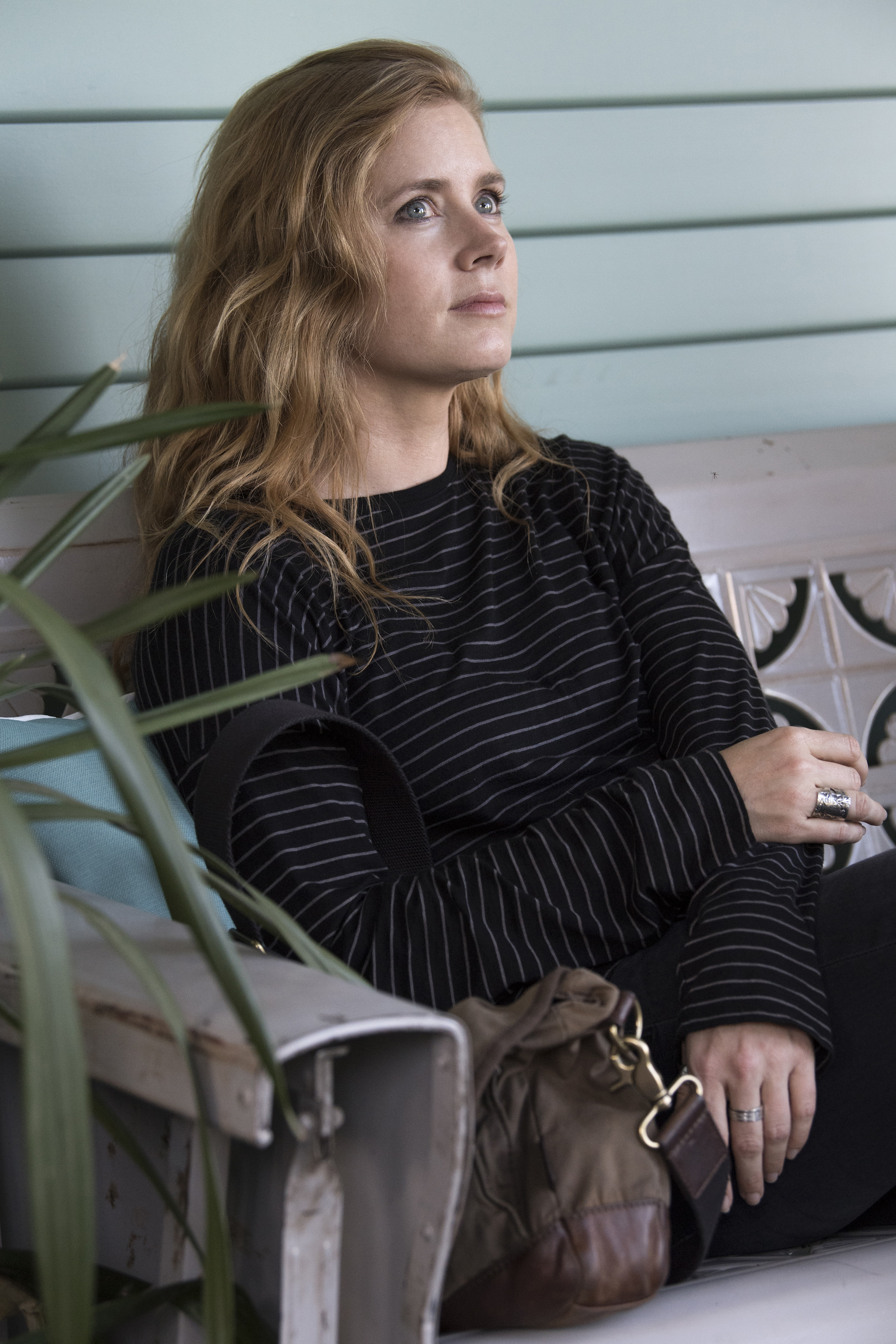 So we manage to put the 78 words that were in the book that she has on her body, and we made the list and we meticulously put these words everywhere we could. At one point we gave this task to the VFX supervisor. We stopped losing time thinking about this device. We just kept pushing the storytelling, the emotional thing that we’re trying to do.
So we manage to put the 78 words that were in the book that she has on her body, and we made the list and we meticulously put these words everywhere we could. At one point we gave this task to the VFX supervisor. We stopped losing time thinking about this device. We just kept pushing the storytelling, the emotional thing that we’re trying to do.
HULLFISH: I was very surprised — watching the video essay that you mentioned — that there’s no original score. Can you talk to me about the use of diegetic music and sound design? I felt like there was score.
Jean-Marc VALLEE: We love that you felt that there was score! We all worked very hard on that. I tell them, “You’re also some designers. When you send me your part, don’t send me your parts with the rough music that you put there with a cue is half-way. Put perspective on it. If it comes from this radio that is shitty and it’s in the back, don’t give me loud music! Just put it in this shitty perspective, more on the right, and play with it.”
This is how we love to use music to put it in the center of this story in the film and the characters are listening to music and it defines them. In prep, I was having a hard time finding Camille’s playlist and her back story music which is something I do as a director on every project. I find the character that will become the deejay of the film or in the series. It wasn’t mentioned in the book.
I had this idea of giving her the music of that girl that she meets at the rehab center for cutters and she commits suicide and she leaves her phone there with all of her music and she uses music as a way to try to escape.
There’s a beautiful line from producer Marti Noxon in the script that reads: “Yeah, but with this, I can get out of here whenever I can.” And “this” is her iPhone with a lot of music. The kid is musically-oriented and she listens to Led Zeppelin, to modern music, to oldies, so we made her a music-oriented person — like the little girl in Big Little Lies. She became the deejay and she contaminated the other characters in her life.
So Camille is learning more about her ex-roommate at the rehab center as she goes through the story, touching the iPhone that belonged to her that is all cracked and fucked up and she likes to touch it cause it reminds her of cutting. At the same time, she likes to listen to this music. She loved the relationship she had with this girl and it helps her to just go through this wild journey that she’s going to — back to her demons, her childhood, her wounds that are all coming from this weird mother.
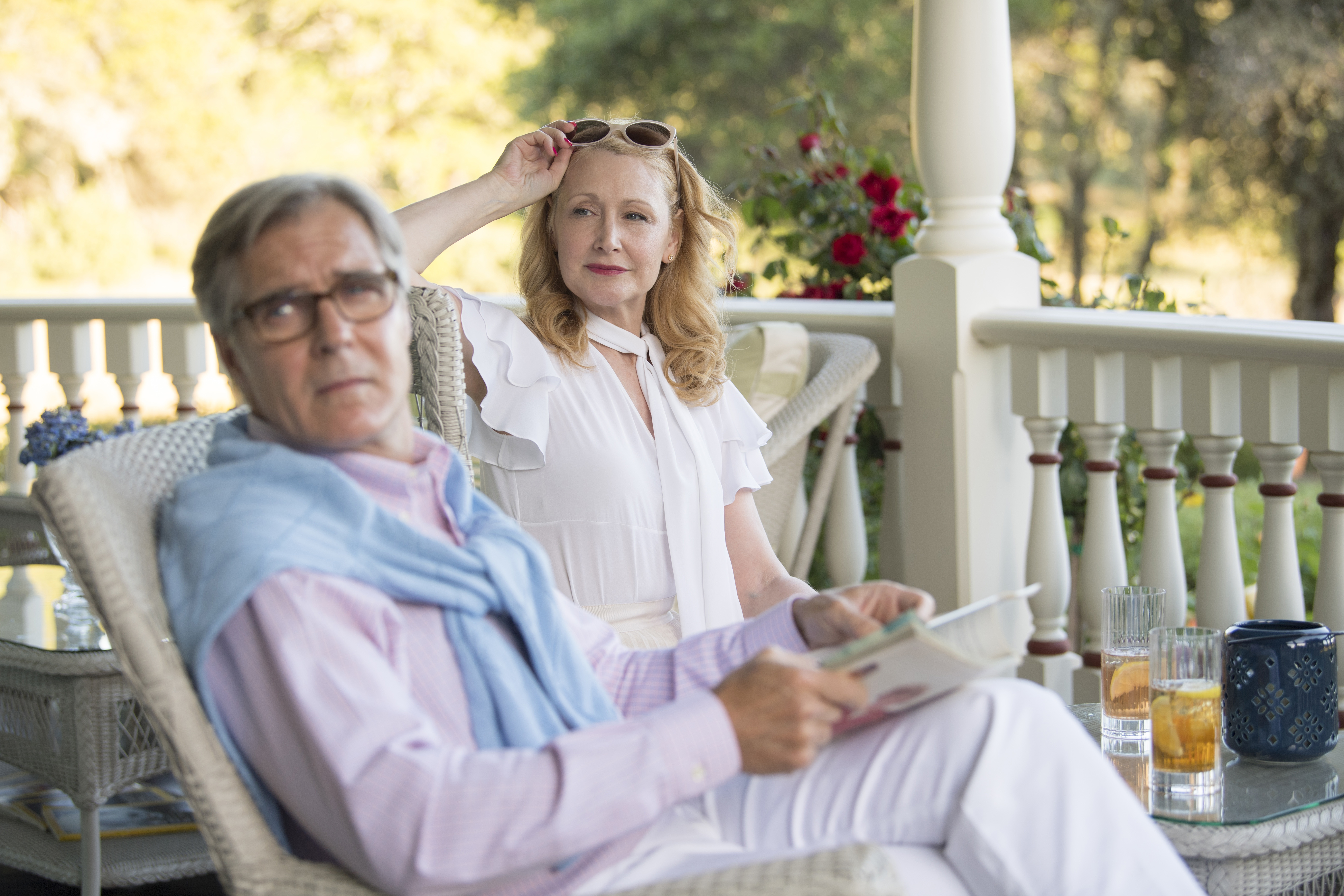 We did the same with Alan. We decided that Alan was going to be a music freak — a music lover, Not only is he a music lover, he has a lot of money, so he’s an audiophile. So we got sponsored by Moon Audio which makes the best analog audio HiFi system in the world. It’s close to half a million — what’s in the room. They came on the set to install it. It’s a big promotion for this company.
We did the same with Alan. We decided that Alan was going to be a music freak — a music lover, Not only is he a music lover, he has a lot of money, so he’s an audiophile. So we got sponsored by Moon Audio which makes the best analog audio HiFi system in the world. It’s close to half a million — what’s in the room. They came on the set to install it. It’s a big promotion for this company.
When we were on set in the morning, we were fighting to sit in the chair in the middle when we were putting on Frank Sinatra records. It’s like the singer is in front of you. The sound doesn’t come from right or left. It seems to come from the center. The amp for the headset and the headset… everything is real.
So we made this guy an audiophile and we used him to serve the story and make this world something romantic, old-school Hollywood. He likes old-school films. And some tracks from Franz Waxman (Rear Window composer, among many others). That’s why his soundtrack is in the film: A Place in the Sun from George Stevens. It’s a theme that he’s listening to.
LACHANCE: Everything is driven by the characters. Everything. The reason why you would probably assume that your hear score is because — as Dominique did in that scene — or with the drug scene with Camille and Amma, we had Led Zeppelin “In the Evening.” We had Engelbert Humperdinck with The Acid. And we mix all those sounds together to make something different — like an LSD trip.
Jean-Marc VALLEE: In episode six when they’re skating around town — they left the party and she’s not supposed to be at a teenagers party, and she’s doing drugs with her sister and kissing her sister and she’s stoned like crazy, so we have fun figuring out the music and sometimes we just bounce. We all tried it. Dominique went for it. Then you did a pass. Emile did a pass. I did a pass. Maxime as well.
The ultimate scene in these two projects was in BLL where the women are fighting in the staircase with this guy who becomes crazy. But he doesn’t realize that he’s fighting something as strong as the ocean. This female solidarity moment becomes something so powerful.
We had the idea of doing this because I was shooting in slo-mo because normal speed didn’t work because we didn’t have time to do proper stuntwork. It looked shady. It was bad stuff. It was really bad. So, I said, “let’s shoot this in slo-mo.”
Then instead of doing it in slo-mo, we speed it and there’s a shutter effect on it. Then we went speeded up to 24 or even maybe at 21 or 22. Then let’s intercut it. We tried and tried different versions.
BARBE: We used the little girl playing it on the piano.

Jean-Marc VALLEE: We use someone to start the track in a diegetic way and then can become score. Or the opposite around — we start with a track that is full score and then we straight cut to change the texture of the music and it becomes source and we realize that it’s playing in the car, for instance.
LACHANCE: We’re talking about the moment at the end of BLL where Reese (Witherspoon) comes back, looks at her kid, who’s playing piano, and the fighting starts with that song as score.
HULLFISH: With Sharp Objects talk to me a little bit about the fact that perspective seems so important, visually. We haven’t really heard from the ladies.
CHAMPAGNE: Right now I’m doing a TV series and we get a lot of material. There are extra-wide shots and top shots and you don’t know where to start from. So I use Jan-Marc’s way, so perspective is really helpful because I choose a character and I choose his view. I can even choose that what the character doesn’t see or hear doesn’t exist. So it helps me really to choose. It’s like a tunnel — when you walk your way through the material.
Jean-Marc VALLEE: Although you have the choice to use the perspective — let’s say — of Patricia Clarkson from the beginning of the scene, or Camille.
On the day when we shoot, I ask the lead actress first, “Would you like me to start on you today?” Normally, I prefer to start on the lead, so it tells me and the DP where to put the camera — whatever she’s going to do. We shoot the rehearsals. Whatever she’s doing we’re going to look at her, She does this, then she moves there and we react to what she does.
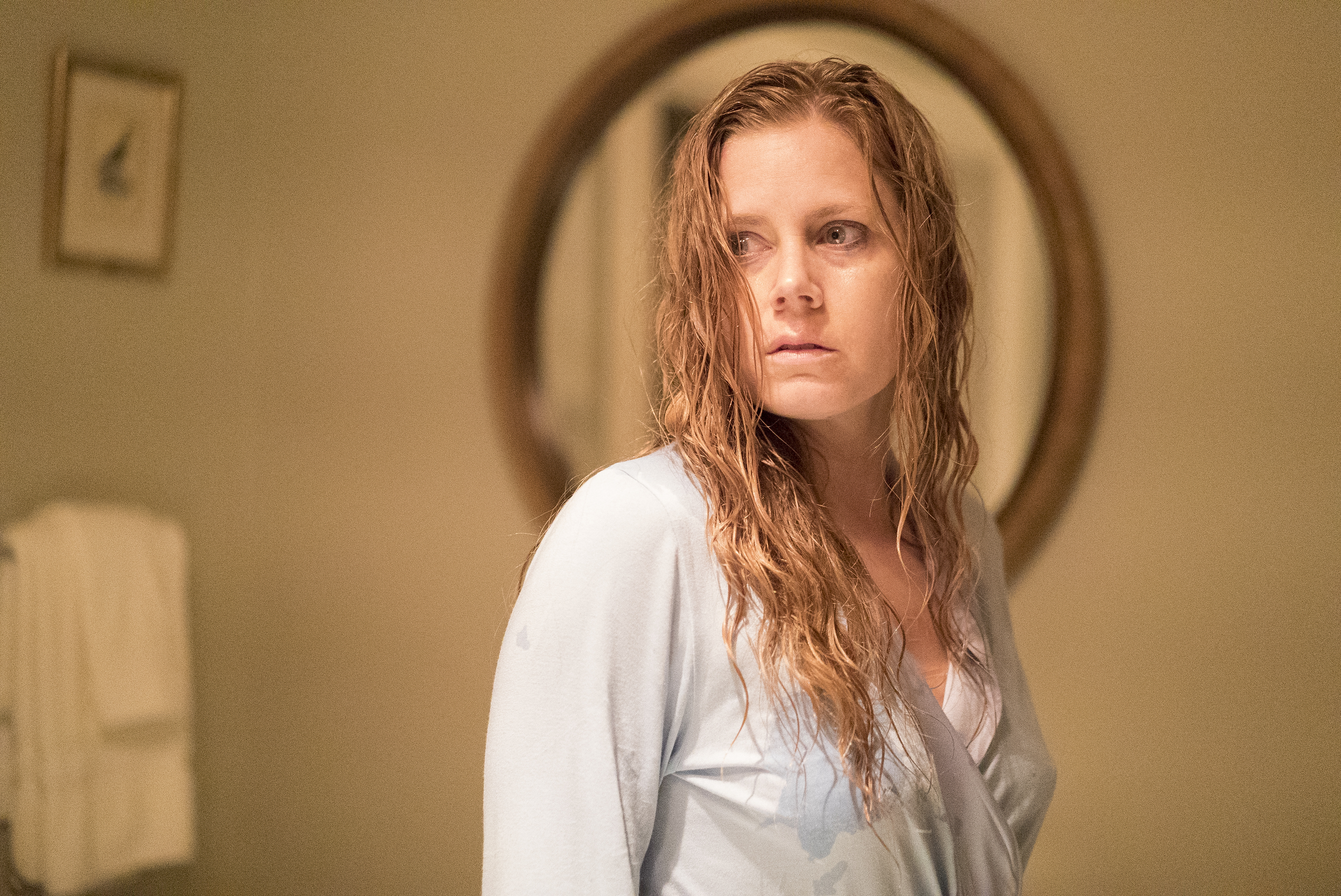 We shoot for about 30-40 minutes — the duration of a card — following what the lead character is doing. Then once I’m done with Amy, we keep that same length — that’s why we shoot for 35 minutes or 40. Then we know what we’re doing now. Then we do it from Patricia’s perspective. After that, I don’t give Patricia the same shots. She’s not as privileged as Camille, therefore we won’t change the 35 mil on her, which only Camille has. We’ll see Patricia Clarkson’s character mainly from Camille’s perspective. We don’t want her to look like or feel like a villain. We want to love this mother. She seems to be weird but at the same time doing the right thing here and there.
We shoot for about 30-40 minutes — the duration of a card — following what the lead character is doing. Then once I’m done with Amy, we keep that same length — that’s why we shoot for 35 minutes or 40. Then we know what we’re doing now. Then we do it from Patricia’s perspective. After that, I don’t give Patricia the same shots. She’s not as privileged as Camille, therefore we won’t change the 35 mil on her, which only Camille has. We’ll see Patricia Clarkson’s character mainly from Camille’s perspective. We don’t want her to look like or feel like a villain. We want to love this mother. She seems to be weird but at the same time doing the right thing here and there.
CHAMPAGNE: There was a rule also: “Keep the distance.” So if the two characters are talking to each other, if they are far apart, you stay wide. You don’t cut to a close-up, even if what they say is important. You keep the distance. That’s an important thing about Jean-Marc’s way with perspective.
For example, in the scene where Camille enters the house and her mother was sitting on the couch, they are far apart, so stay wide. They talk to each other and you are in a wide shot. When she comes closer, then you are allowed to cut closer.
HULLFISH: I was gonna ask about that because I noticed the same thing in a kitchen scene in one of the early episodes. When the mother’s in the kitchen she’s always very wide. You’re far away from her.
Even in the bar with the discussions between the detective and Camille if they’re not sitting next to each other there is the distance. That’s a very interesting rule.
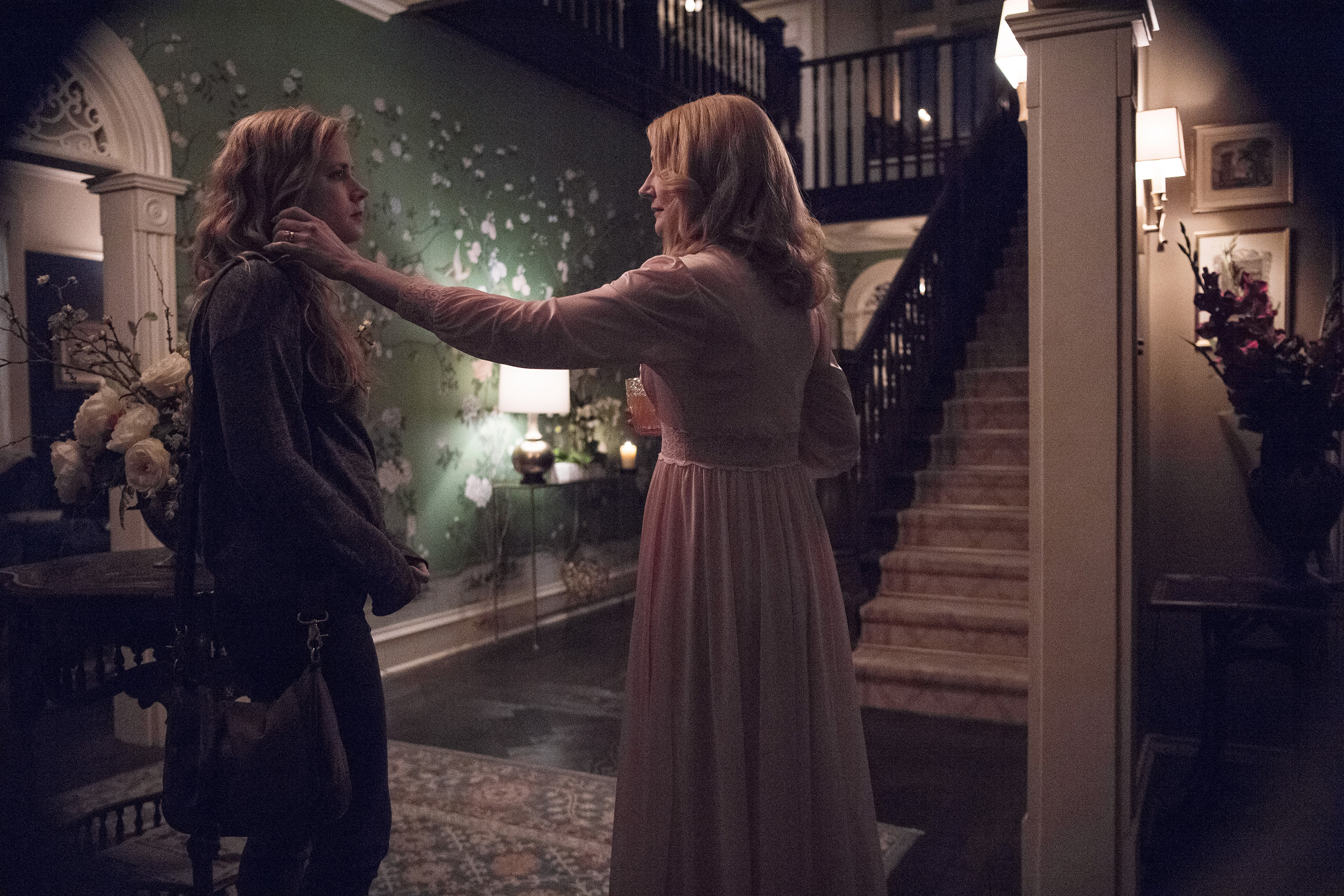 LAHAIE: When we respect these distances, it creates like a physical distance in space so we can understand if they are far from each other and also what does the dialogue say? Do we have to respect that distance of this moment? And when do we punch in with a close-up?
LAHAIE: When we respect these distances, it creates like a physical distance in space so we can understand if they are far from each other and also what does the dialogue say? Do we have to respect that distance of this moment? And when do we punch in with a close-up?
So we will often start the scene with the real physical distance and then when the dialogue suggests that we need to go closer, then we will use these close-ups.
I realize that we don’t often start with close-ups. We will use it but most of the time we’re pretty wide. Jean-Marc always says, Use the widest shot you can and then we can start to come closer to the characters.
Jean-Marc VALLEE: Mainly the lead, so there are more close-ups on Amy Adams than anyone else in the film. We’re going to use a sixty-five mil or an eighty-five to do some specific close-ups or shots of what she’s looking at in a tighter shot. If she’s looking at a tattoo on someone or looking at something specific or her mother pulling at her eyelashes. We used a 100 mil there and there’s a flashback where she’s at the funeral. On a 200 mil macro lens, we see these eyelashes from young Camille’s perspective again.
LACHANCE: In Sharp Objects specifically, everything was through Camille’s eyes. Everything had to be through her perspective. Everything was from her. You had to keep that closeness to Camille whereas everybody else — depending on their relationship with the character — if that’s when they come closer or further. The mother stays away most of the time because she’s evil to Camille.
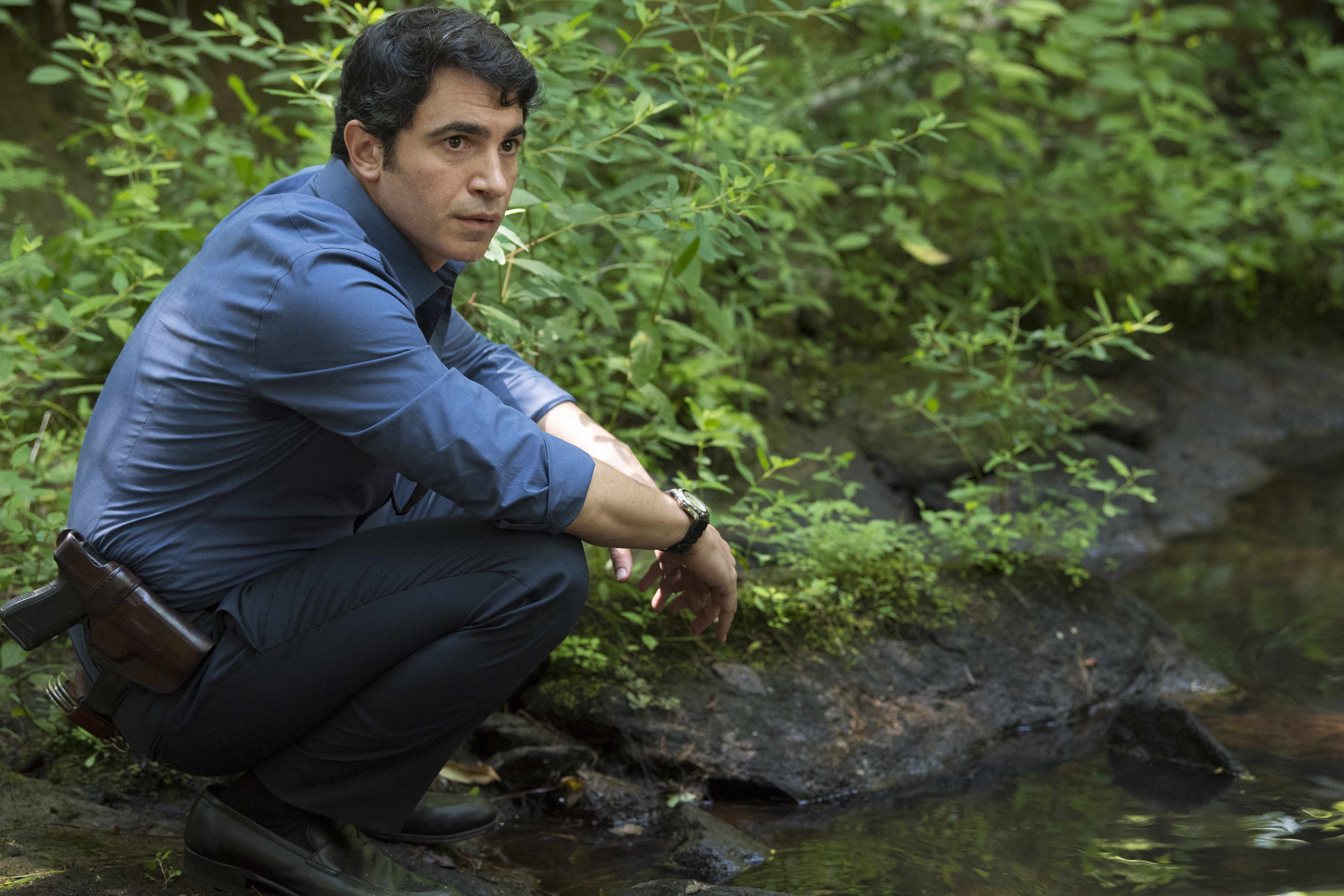 BARBE: This point-of-view thing that we try to respect as much as we can implies two other things: you cut where the character is looking and the eyes of the character will motivate the cut.
BARBE: This point-of-view thing that we try to respect as much as we can implies two other things: you cut where the character is looking and the eyes of the character will motivate the cut.
Also, you don’t cut as an omniscient viewer. You cut to show what the character’s feeling. You want to see what the character sees and that’s it.
Another thing that an editor might find old-school is that we don’t jump the axis of course because we’re in the perspective of character so his/her point of view won’t ever jump the axis. It’s just something very logical.
Jean-Marc VALLEE: This is this is a rule that we really focus on. You can call us old-school but in order to feel that geography, the distance in these looks if we jump the axis we get lost and we’re not sure what we’re looking at, so we really respect that in a very precise way.
HULLFISH: But that’s more directorial I would think. If you don’t break the 180 rule as the director, you can’t cross it is the editor.
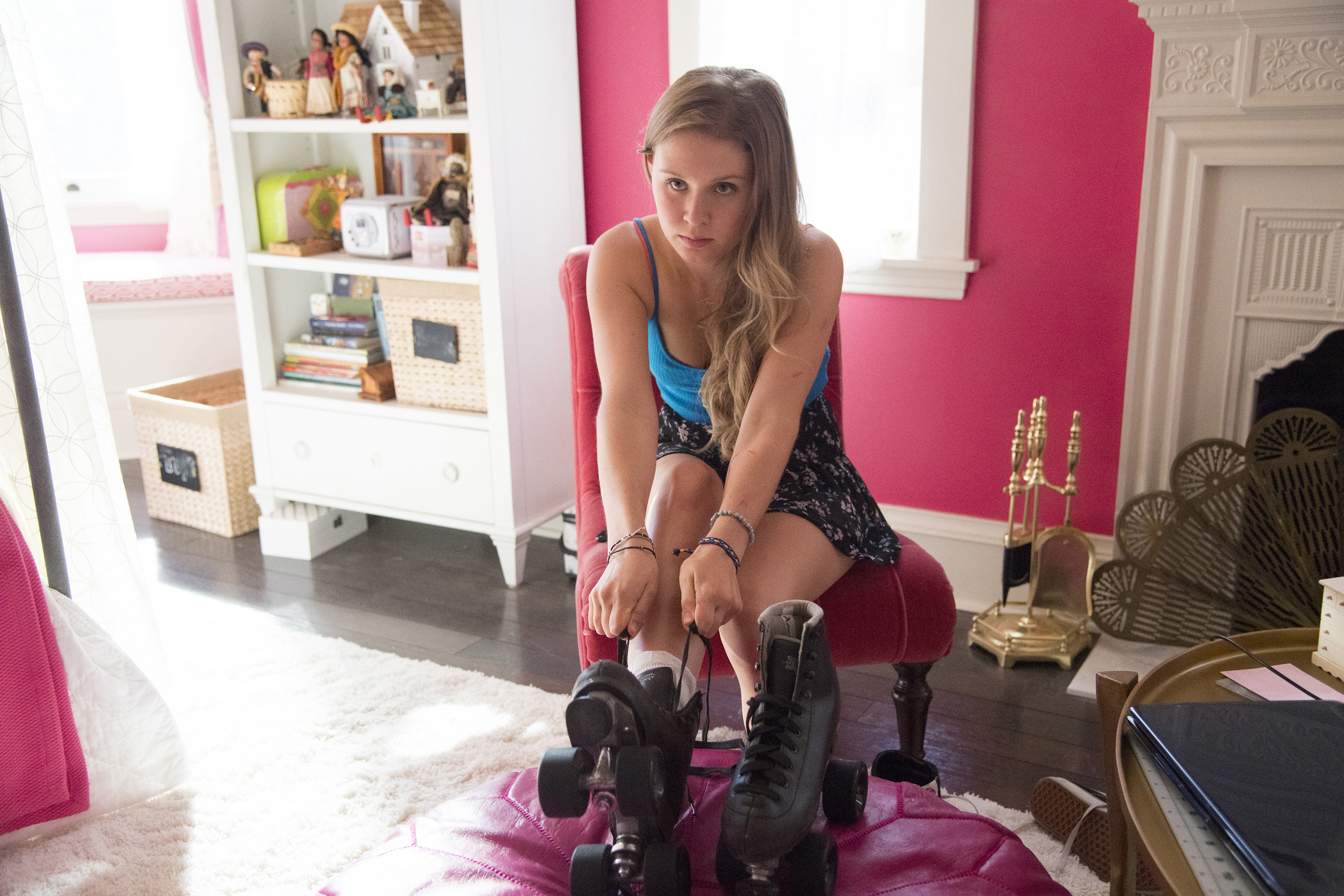 Jean-Marc VALLEE: We could do it in the cutting because sometimes we have the possibility to do it.
Jean-Marc VALLEE: We could do it in the cutting because sometimes we have the possibility to do it.
LACHANCE: Jean-Marc shoots in this kind of 360 way where everything’s open. So there are scenes where they jump the axis.
HULLFISH: You mentioned some of the things that you wanted to keep or draw from in the book, like the words on her body. I noticed that a lot of the dialogue is identical to the book. Did everybody read the book before they started working on the series?
ALL: Yes.
CHAMPAGNE: The French (all laugh)
HULLFISH: She didn’t write it in French. It was translated into French?
Jean-Marc VALLEE: It’s called — in French — “On My Skin.”
BARBE: This entire answer is hard to understand, sorry if Véro wasn’t clear enough. Here is what we propose instead:
The book would provide us with incredibly detailed descriptions of how Camille feels because it is written through Camille’s perspective. I remember finding this very helpful while editing a scene where Camille is about to have sex with John Keene.
She’s in a hotel room and John Keene starts removing her clothes. In the book, she says that it’s been 16 years since she’s shown her body to anyone and I was really moved by that.
So we managed to add that information in some dialogue in another scene where she responds to her mother. The book was very helpful in that matter.
HULLFISH: And for those who haven’t read the book, there’s some stuff that you don’t really need to know. Like I didn’t understand the broken phone in her car. I didn’t understand where it was from. And you don’t have to know, right? The audience doesn’t need to know everything.
Jean-Marc VALLEE: At one point, no, but it’s right to have a question mark as an audience when you watch something. What are these flash frames? Wait a minute! What did I see there for seven or eight frames? A drain? A bottle? A toilet? What is she thinking about? I have some questions as an audience. I don’t understand. It’s like the telephone. The telephone is broken. She leaves her apartment in St.. Louis. She touched this phone. She had a weird dream and she was listening to some music. The music is only coming from the left because she lost an earbud while she was sleeping. You discover that at the end of the scene.
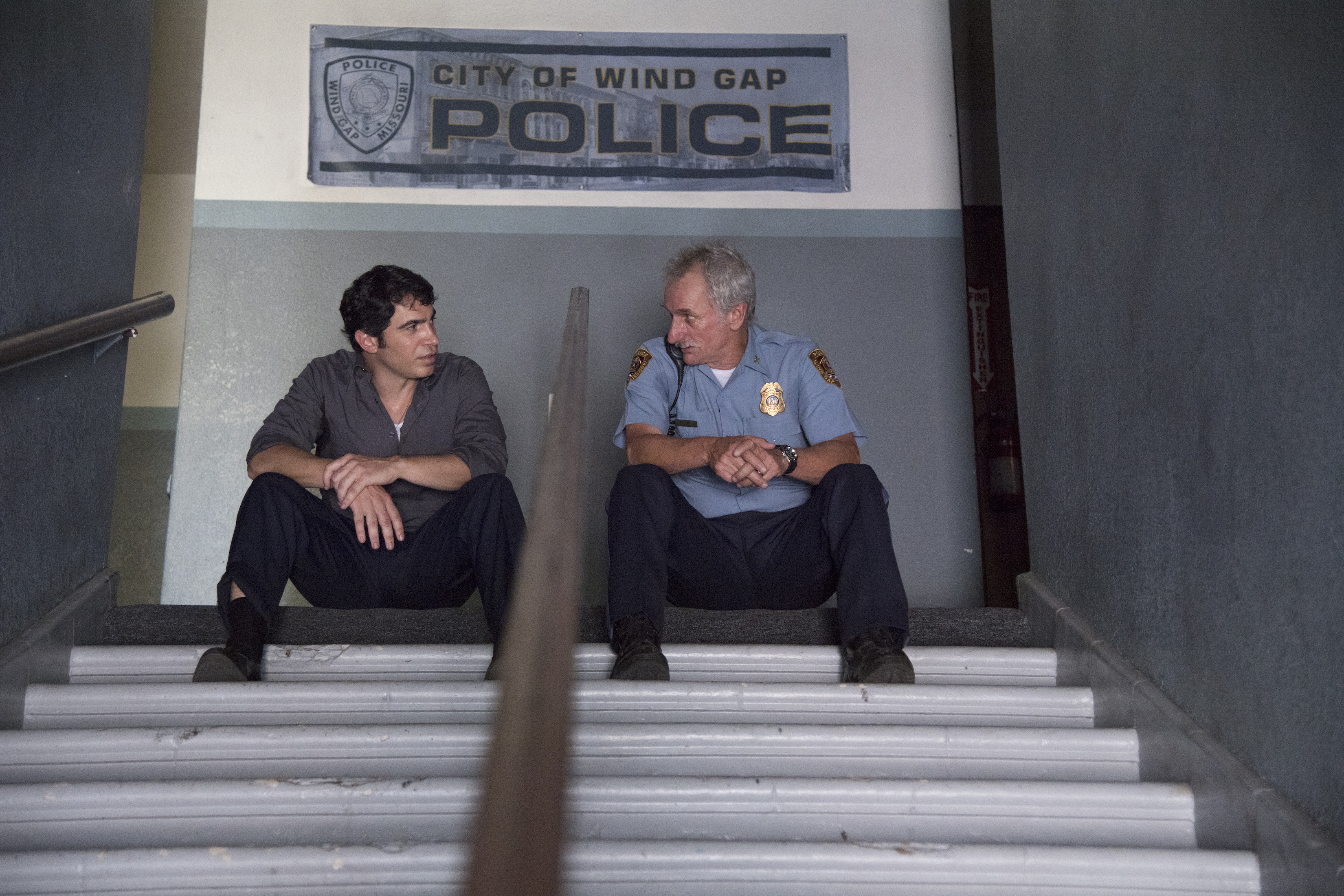 See, it’s very prescriptive-oriented. Then you get answers later on and then we want to give the audience some answers at one point but not necessarily when it happens. It can come at the end of an episode or an episode later. Then, “Oh! The telephone! That’s what we’ve been seeing. That’s why she’s holding it. How come she has the telephone? She’s thinking of this girl.”
See, it’s very prescriptive-oriented. Then you get answers later on and then we want to give the audience some answers at one point but not necessarily when it happens. It can come at the end of an episode or an episode later. Then, “Oh! The telephone! That’s what we’ve been seeing. That’s why she’s holding it. How come she has the telephone? She’s thinking of this girl.”
At the same time, we’re doing suspense and thriller and whodunit. We want to play this game as well, just like Gillian Flynn played it in her book and it was well done.
So we have this bible — this source material — of course, the script, and Marti with her team of writers adapted it and we’re following the plan. We’re having more and more ideas to try to tell a story in a visual way and in a way where are we are going to experience it through the main characters’ perspectives These five-six characters are mainly our guidelines.

LAHAIE: I wanted to jump back to the idea that Jean-Marc shoots 360, which means that often we get those 30-40 minute takes. During these takes, you have all kinds of shots: medium, close-ups, wide shot. You change the axis. They shoot only with one camera, as opposed to other series.
On the one I am working on right now, they’re shooting five cameras.
BARBE: WHAT!!!???
LAHAIE: This is the language that we have. We’re six editors and we know which shot to use — which take to use — instantly because we’re all talking the same language.
HULLFISH: And do you think that language is because of a discussion that your director had early on, or is it because you guys are kind of “getting in each other’s pockets,” so to speak.
LAHAIE: I don’t want to speak for the other editors, but I think that once you’ve touched this language you can not go back and I’m sure we’re all trying to apply it to other stuff we work on right now because it feels very logical. It brings more realism to everything you do.
When you talk about music perspective — sound perspective — you respect the sound. Like if they hear the music in their Airpods, you’re gonna hear that shitty sound coming from their earpods or the speakers in the old Volvo was a shitty sound as well.
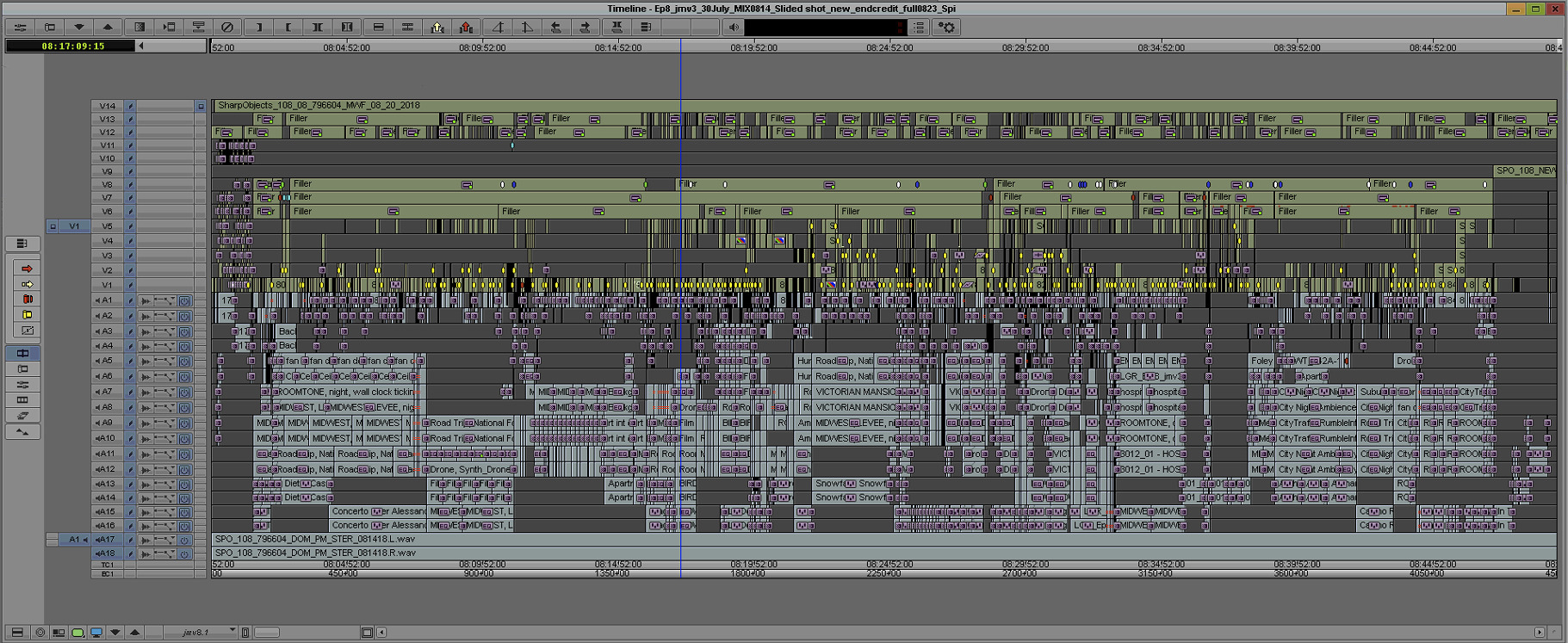
This is the world in which we live and it makes sense, as opposed to other series where you’re gonna see people very far in the distance and you’re gonna hear them like they were five feet from you. It’s really logical.
HULLFISH: It sounds like you’ve all kind of learned something that you’re taking into other projects.
ALL: Yeah yeah.
BARBE: When we started to work with Jean-Marc, I didn’t have this vocabulary and we learned it. He had the patience to say, “This is my vocabulary.” and now it feels like second nature. When Jean-Marc was choosing the editors for the team, I remember he told me he was looking for an editor would empathize with the characters’ emotions and understand the underlying subtext.
He was looking for that quality and from there he just shared his vocabulary with us and then we would be current as a team to edit together.
Jean-Marc VALLEE: Yeah.
LACHANCE: For these kinds of projects, it’s insanely important to get inside the character’s head and really understand what makes them tick.
All those flashbacks. What would you, as Camille think about right now, and how does this drive the story forward?
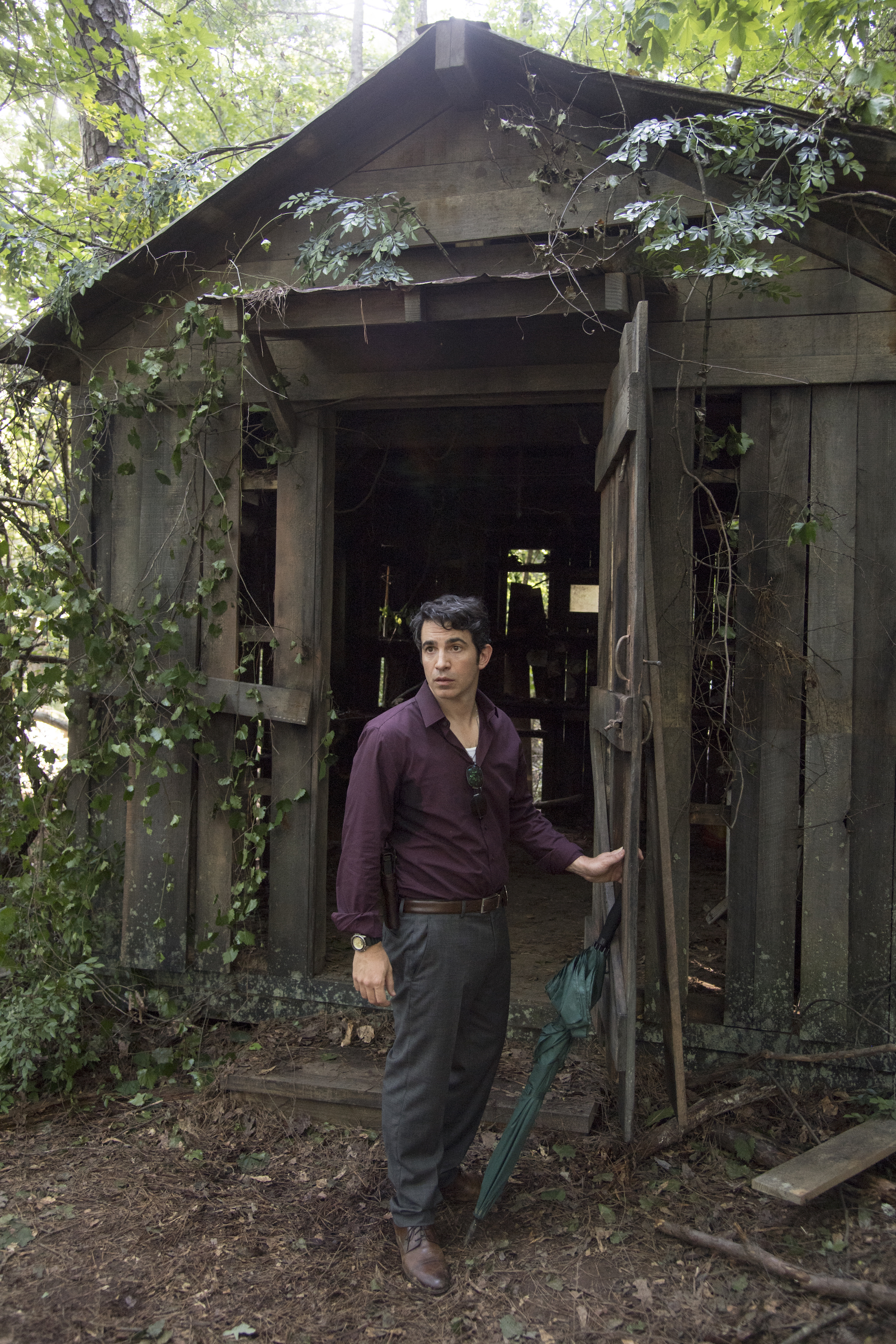 HULLFISH: But to do that you really need to know the context of the entire story and where it’s going because otherwise, you wouldn’t know that the back of a cruddy toilet is what she’d be thinking about.
HULLFISH: But to do that you really need to know the context of the entire story and where it’s going because otherwise, you wouldn’t know that the back of a cruddy toilet is what she’d be thinking about.
Jean-Marc VALLEE: At the same time I must give them credit. Of course, I was looking for this quality of:. “Are you willing to try this? Are you humble enough?” I was looking for humility in these editors. Are you humble enough to stop doing what you’re doing and try to do this kind of thing?
They’re all different but they’re all doing the same thing — trying to serve this language and this story and the emotion. I see what each of them do on a daily basis.
We talk and then they go back and they all have something different but they all serve the same goal. It’s funny how there are different strengths with rhythm, with storytelling. This guy is not afraid of doing weird stuff with music (looks at his son) There’s not a lot of experience therefore there’s a daring.
Maxime is the person I’ve been working with the longest. We get to explore and challenge. It’s nice to continue on one project after another and develop this thing.
HULLFISH: You mentioned humility and lack of ego. That is something I talk about a lot with editors. How is it with you as both editor and the director?
Jean-Marc VALLEE: The other editors on the team are the first audience and they’re not afraid to say things.
ALL: (LAUGH)
Jean-Marc VALLEE: They tell me, “I wasn’t moved there.” I hope it’s not about my ego. First, it starts with a dialogue one-on-one and then when all the parts are assembled we pick up the phone or we meet here like we’re doing today (on Zoom) and we talk and we ask, “All right. What’s wrong with this?”
CHAMPAGNE: You’re often critical with your shooting. Jean-Marc will say, “That is shit. When I shot it, it felt good.”
LACHANCE: “We have to fix this.”
ALL: Laugh.
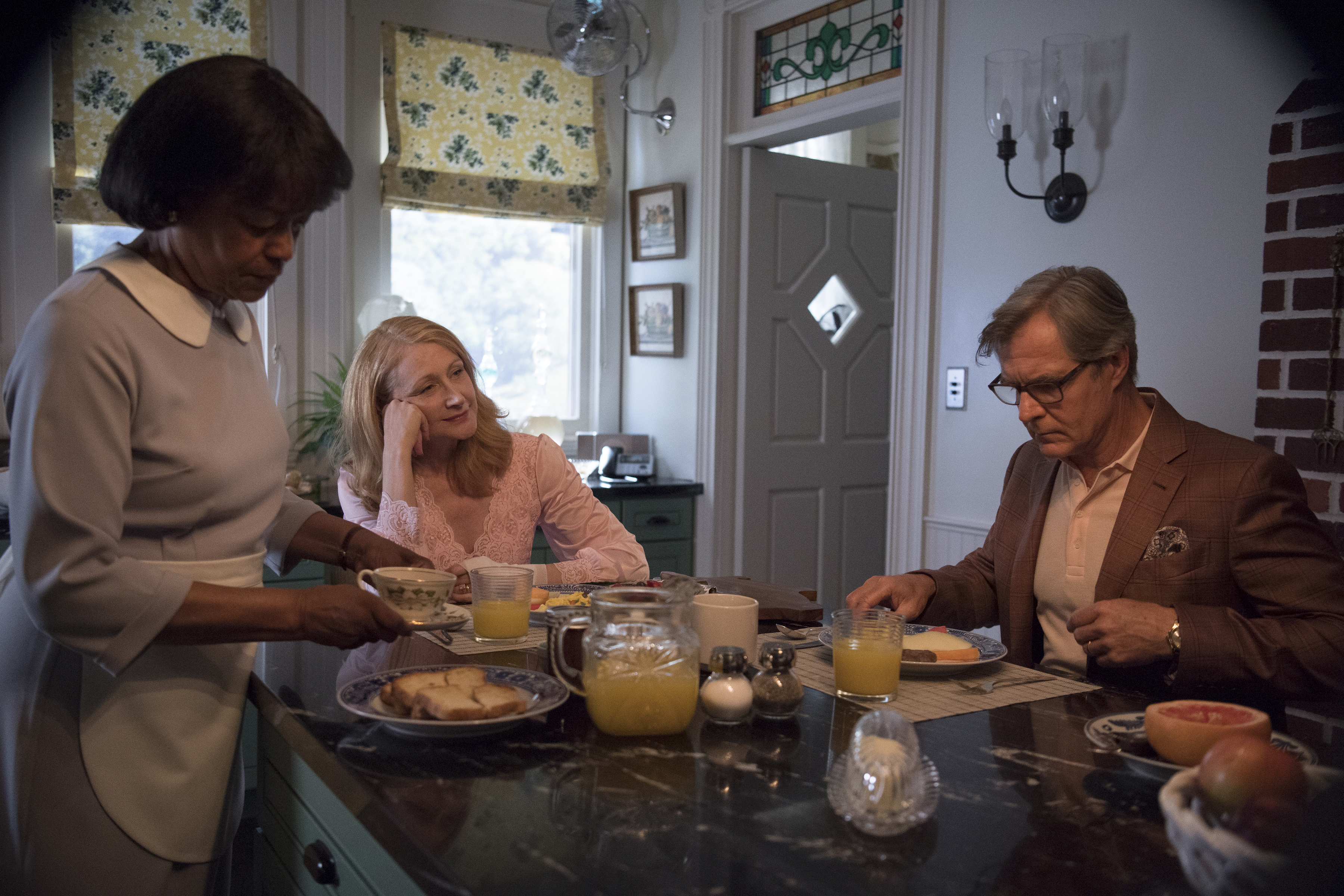 Jean-Marc VALLEE: I think I know I have a big ego being a director and pushing for what I believe in and fight for and love. And when we send a cut to David Kelly and Gillian and Marti and the other producers and HBO, we want them to feel that it’s almost the final product. Although it’s a cut coming from Avid with 12 audio tracks six video layers with some temp effects but it feels like they’re watching almost an episode that could be aired.
Jean-Marc VALLEE: I think I know I have a big ego being a director and pushing for what I believe in and fight for and love. And when we send a cut to David Kelly and Gillian and Marti and the other producers and HBO, we want them to feel that it’s almost the final product. Although it’s a cut coming from Avid with 12 audio tracks six video layers with some temp effects but it feels like they’re watching almost an episode that could be aired.
So this is our goal and we work and it takes about five, six weeks to deliver an episode with six of us. When we’re happy, we send it over and see how they react. Normally it’s, “Oh my God. I’ve never seen a rough cut so detailed” and because of the language of the music, since we’re not waiting for a composer and we’re not doing score it looks like the final thing. It sounds like the final thing.
HULLFISH: Let’s hear from some folks that have cut in some flashbacks. The flashbacks are not “announced” with any kind of sound effect that tells you that you’ve just entered a flashback.
Jean-Marc VALLEE: Using Michal Zak’s “thought cut” term, there is a difference between when we use a flashback with sound — sometimes we do, but rarely. And then she has these thoughts and we see her process of thinking where she’s with her mother and Alan and then she sees her mother, but we respect the distance.
But it’s so nice the way Patricia touches her eyelash. It was so beautiful. Let’s put a 100 or 200 mil on this and shoot this and we’ll use it later on. We’ll break the linearity and there’s no reason to cut to an extreme close up there. So why doesn’t she go to her room? She puts some water in her face. She looks at the reflection and she thinks of what she just experienced, which is now the 200 mil close-up of the eyelash.
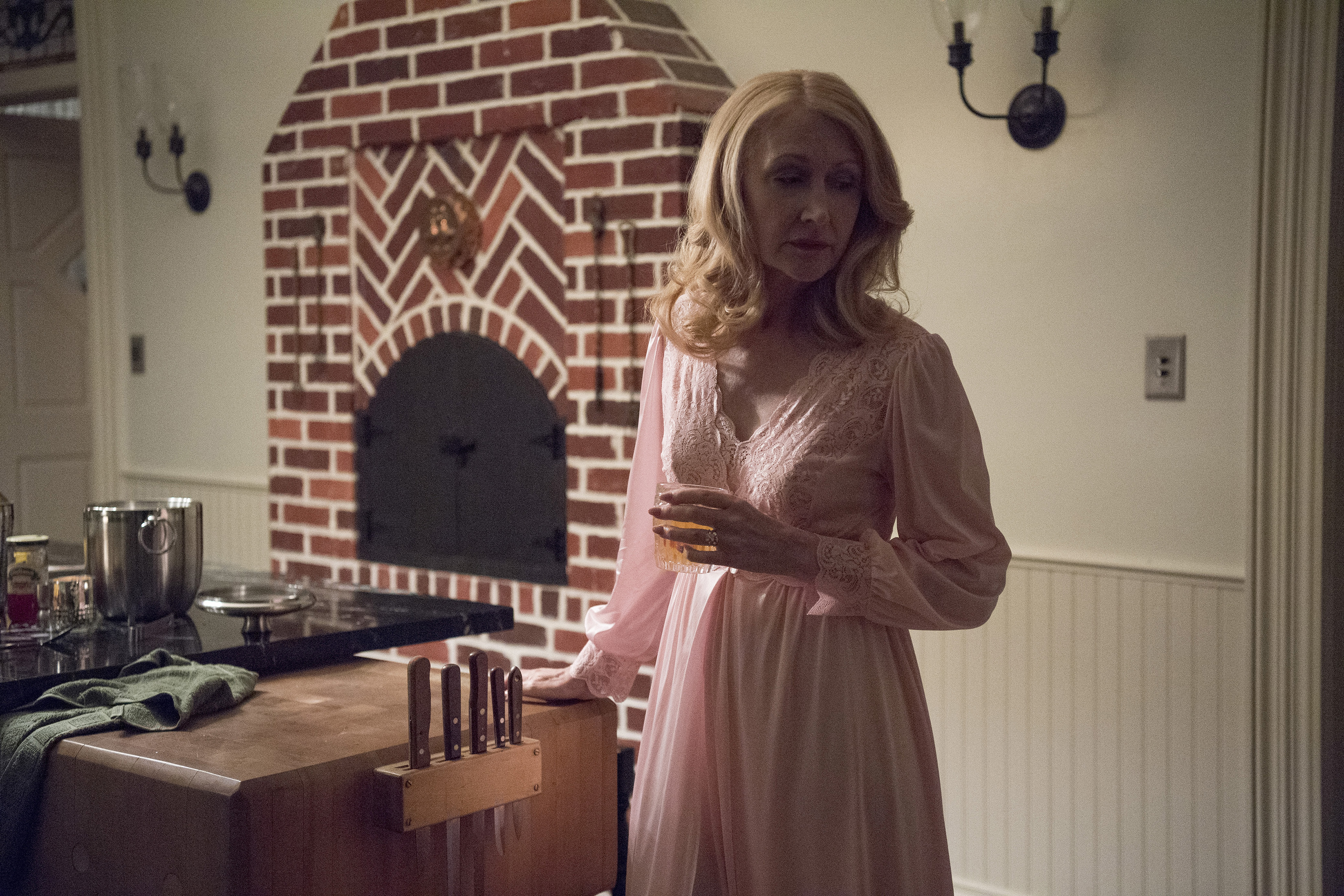 Why would we go with the sound there? As we hear the water falling in the sink, which is nice and it’s the process of the thought. It’s just a thought. So if the important thing was the SOUND of the thought, maybe we would use it.
Why would we go with the sound there? As we hear the water falling in the sink, which is nice and it’s the process of the thought. It’s just a thought. So if the important thing was the SOUND of the thought, maybe we would use it.
The eyelash in the kitchen brings her to the eyelash in the funeral. We don’t know yet that it’s a funeral because he starts close and then we cut to young Camille. She’s looking at her mother from a distance. Then we see the mother seated by herself in this funeral room. There is a coffin and she gets close and we understand that she experienced a funeral somewhere. Who died? We don’t know. We’re in Episode 1.
We’ll find out later in the episode that her younger sister died. We cut to a flashback where it’s only image. If we used the sound at full level with all the crying and the screaming from young Camille, it felt over-dramatic and we’re trying too hard.
So we tried a version with no sound from the past and then we realized that if we used a distant ghost of the sound from the past with some reverb on it and just a little bit of yelling as we still hear Camille looking in the present at the bed of her sister that hasn’t changed since she died because the mother doesn’t touch this room. So we keep the sound of the present, and sometimes the sound of the past is there but most of the time when it’s a quick flashback there’s no sound.
LACHANCE: It’s keeping with the realism of the perspective of Camille. So when you yourself are imagining things where you get lost in a train of thought, you’re not really necessarily hearing the sound — you’re still in the present — but stuff is flashing through your head and that leads to another thought that leads to another thought.
The goal is just keeping it as real as possible.
HULLFISH: I was talking about the quick little flashes. In some movies or some TV shows those would have some kind of a sound to let you know, “Hey, that was a flashback.”.
CHAMPAGNE: A lot of my first editing I would put a nice sound effect on those and Jean-Marc would say, “What is that? Get rid of that?”
HULLFISH: So you learn quickly.
BARBE: The thing that we really didn’t want is to realize that there is a manipulation from the crew, the camera, the editors, the actors. We were trying to not be spotted.
Jean-Marc VALLEE: That’s why sometimes when they send me stuff, I say, “I spot you. I spot you.”
ALL: (laughing)
Jean-Marc VALLEE: Or you make me spot the acting. Can I not spot the acting? I don’t know how to do it. This is your part. You figure it out.
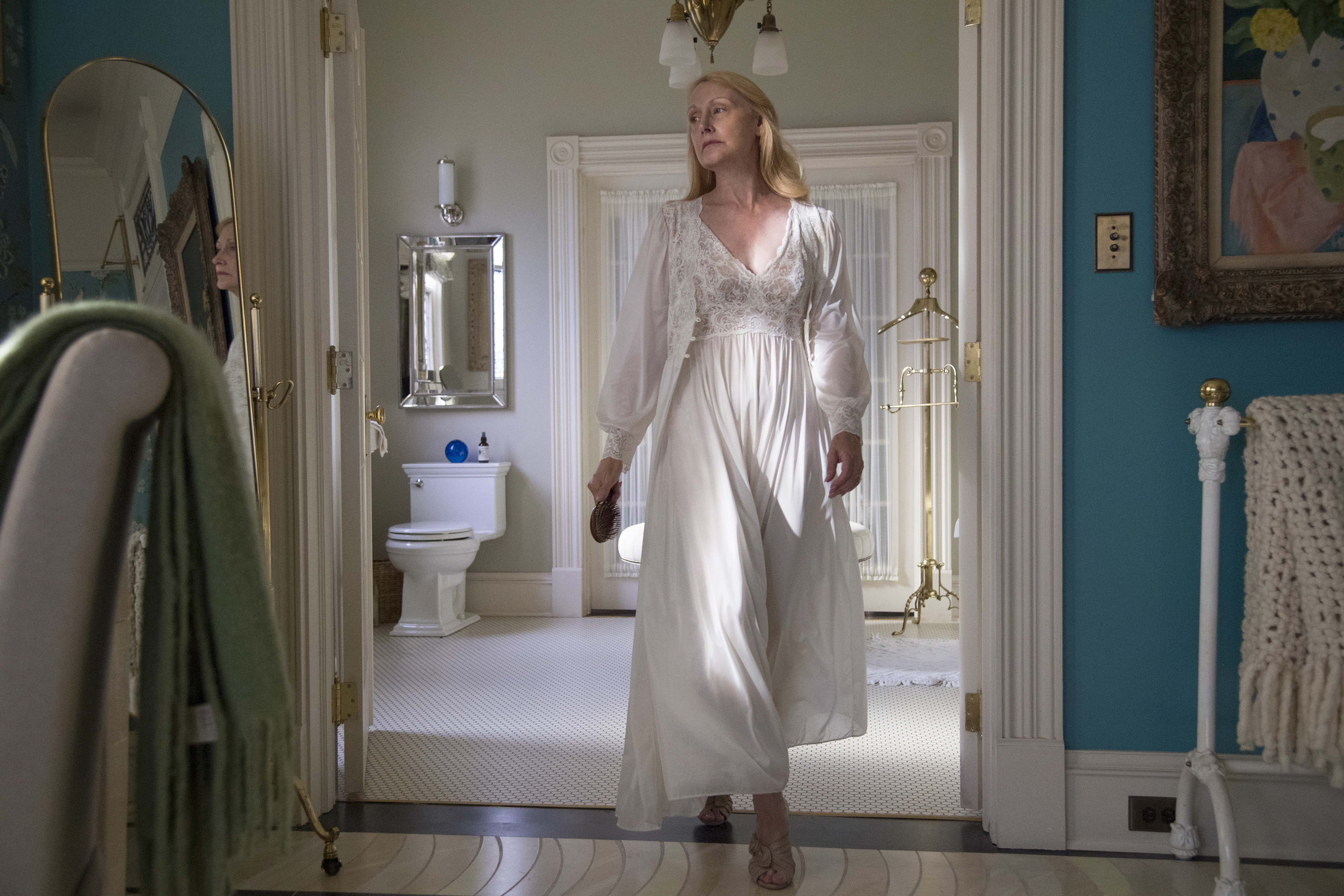 HULLFISH: So, you mean that you’re seeing “acting” as opposed to realism?
HULLFISH: So, you mean that you’re seeing “acting” as opposed to realism?
Jean-Marc VALLEE: Instead of seeing characters and being an audience just watching and receiving this and not being disturbed by acting.
“Oh, I spot the acting.”
“Oh, I spot the editor. He’s cutting too much.” Why do you want to cut before she looks? You cut to the sister before she looks? Be patient.
CHAMPAGNE: Be patient. That’s one of the things we were told.
Jean-Marc VALLEE: Just follow your instinct.
Are we aware of the fabrication? Are we being spotted with our DP, camera, editing, acting, director? We could be clever.
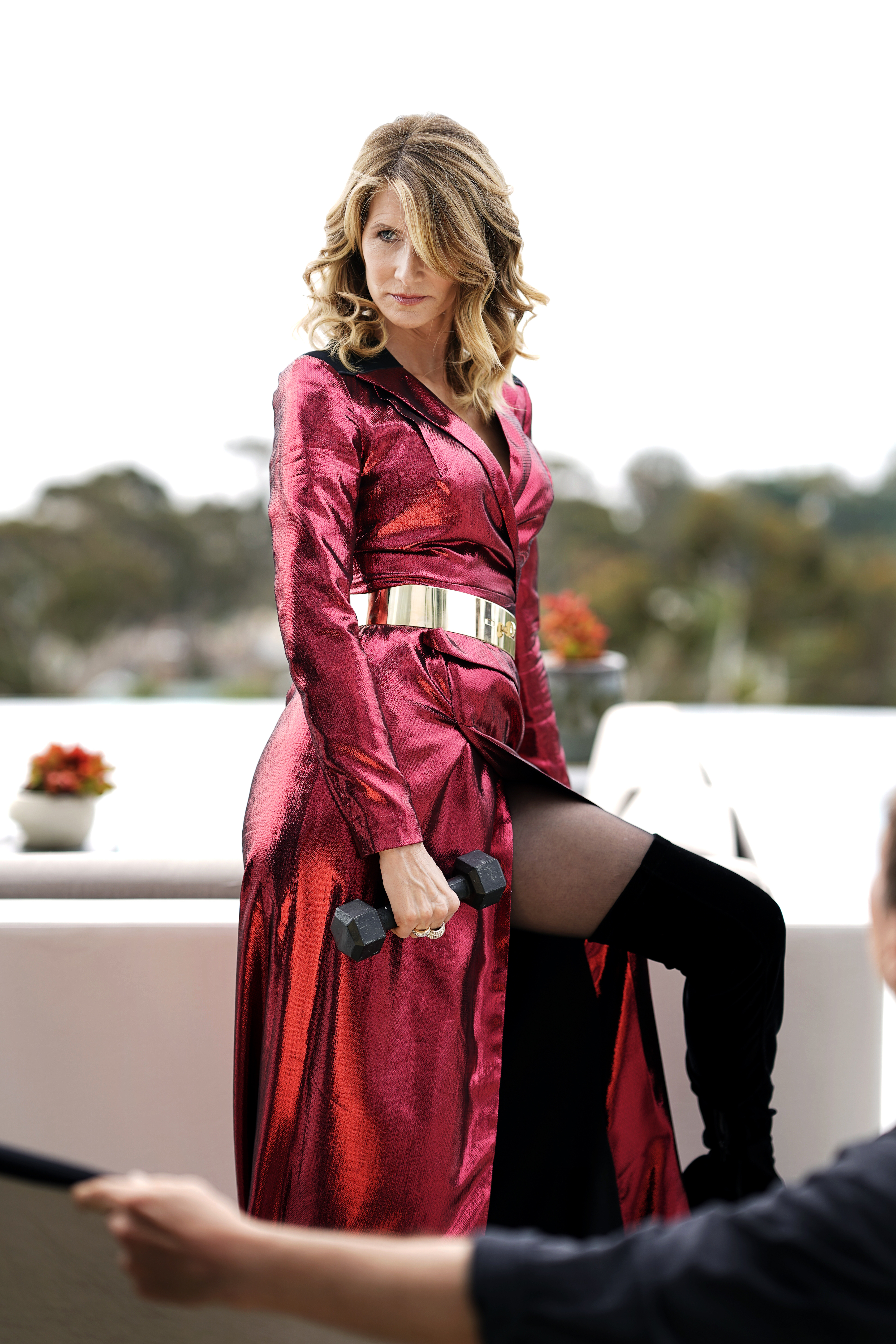
HULLFISH: But all of those things have to be invisible. As a team, you’ve been working together for a while. But sometimes when you switch to a new director or a new team, some of these rules are different for each director. Have you discovered, “I can’t use this rule with this director.”.
LACHANCE: My personal choice would be to edit this way because it just feels so right. My instincts are just that this is how I do it.
I’m working on another series where I apply these rules and it works so well and everybody was so happy. Director said, “Oh my God! It’s amazing.”.
CHAMPAGNE: Same for me. If I can use these rules, I will use them. Sometimes, because of the material, you have to manage differently.
LAHAIE: For example, this series I’m working on, the director is also a DP, so he really likes using these big movements. He already thinking that how we’re going to cut the scene is how he’s gonna use these movements.
With Jean-Marc, it’s not about movement. It’s about serving the story and being touched by the acting.
Jean-Marc VALLEE: This all came from a place where I got frustrated with DPs and with material and I want to tell the actors, “Why don’t you move right?” but they can’t because the lighting is restricting them.
Then I shot Café de flore (2011) with Down syndrome kids. We realized quickly that the Down syndrome kids were not able to function with cinema equipment and with people around, so it all started there where I asked the crew to get out and the DP to take his stuff.
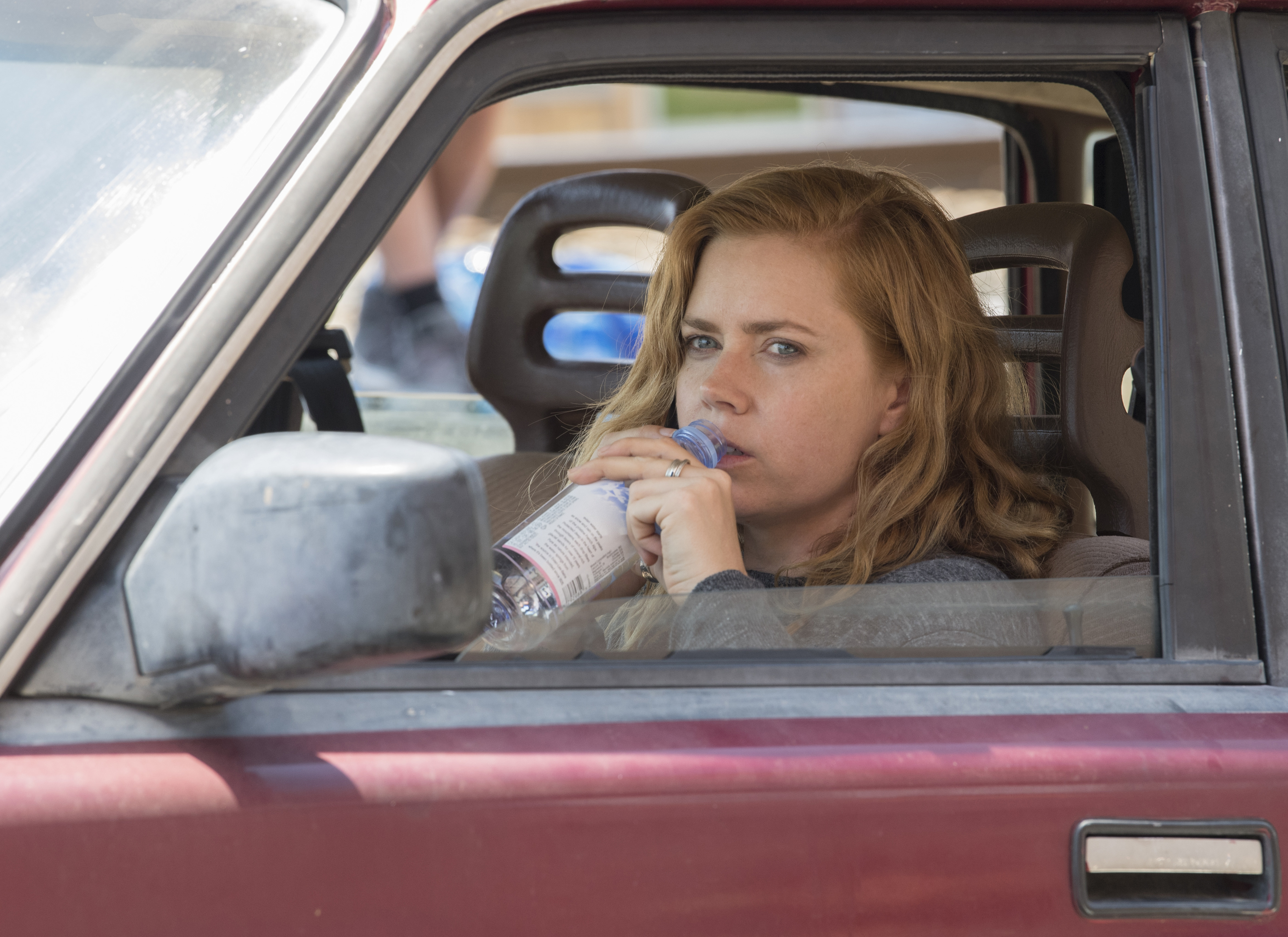 Then the actors were there with the Down syndrome kids who we shot hand-held and we looked at the dailies. It wasn’t cut. It was shot on the RED, and we were in a cinema and I had — with the crew — a cinema experience with just the dailies. I thought, “Wow! This is great. This is possible. And it’s not heavy. Because it’s so heavy to work the traditional way of using the lights and staging and marks and rehearsing for focus.
Then the actors were there with the Down syndrome kids who we shot hand-held and we looked at the dailies. It wasn’t cut. It was shot on the RED, and we were in a cinema and I had — with the crew — a cinema experience with just the dailies. I thought, “Wow! This is great. This is possible. And it’s not heavy. Because it’s so heavy to work the traditional way of using the lights and staging and marks and rehearsing for focus.
So I just said, “No. Let’s get rid of this.” I chose projects that would allow me to go on with this method, with Dallas Buyers Club, with demolition with Wild, then BLL, then Sharp Objects. Hand-held. Available light. Use the space. 360 degrees. The crews out and let’s figure it out.
I used to design and be creative beforehand like a lot of directors are doing. They’re doing storyboards and they’re being creative and then you arrive and you’ve got the plan and this is what you stage and do.
I don’t do this anymore, although I respect it and I still love films that are doing it.
HULLFISH: I was thinking about the overall pace of the show. What I’m about to say, I’m not being critical, I just want to hear the justification and purpose of it — you have elements like the long drive from St. Louis to Wind Gap. Why have that extended moment and then later, have other moments where the time is jumping forward and skipping?
I know it’s a derogatory term, but there’s often a solid use for it — of shoe leather. Why show travel? For example, in the first episode, why show her driving up to her house? Why doesn’t she just knock on the front door and she’s there?
LAHAIE: With the drive from St. Louis to Wind Gap, I think it’s nice to establish exactly where we are. So you see the St. Louis Arch and she sees words written on the boards on the highway. It’s used, not only for establishing place but we’re in her mind. We’re with her. We also see what she’s looking at.
It’s also a moment where we hear some music. If I recall, in this scene, we have four or five Led Zeppelin songs.
Jean-Marc VALLEE: The answer is right there!
HULLFISH: The music?
Jean-Marc VALLEE: We learn about her. We learn about the way she uses music. Of course, we could have had her just get in the car and she arrives but the journey is more important than the destination in that case because “Oh my God! She’s just listening to Led Zeppelin. How many tracks? And then she’s repeating this track that she listened to at the beginning and it’s nighttime?” There’s some time passing by and she’s smoking and we see this environment. So there is a story-driven purpose. There’s character-purpose.
The first version was a minute and 30 and then the final thing it’s 25.
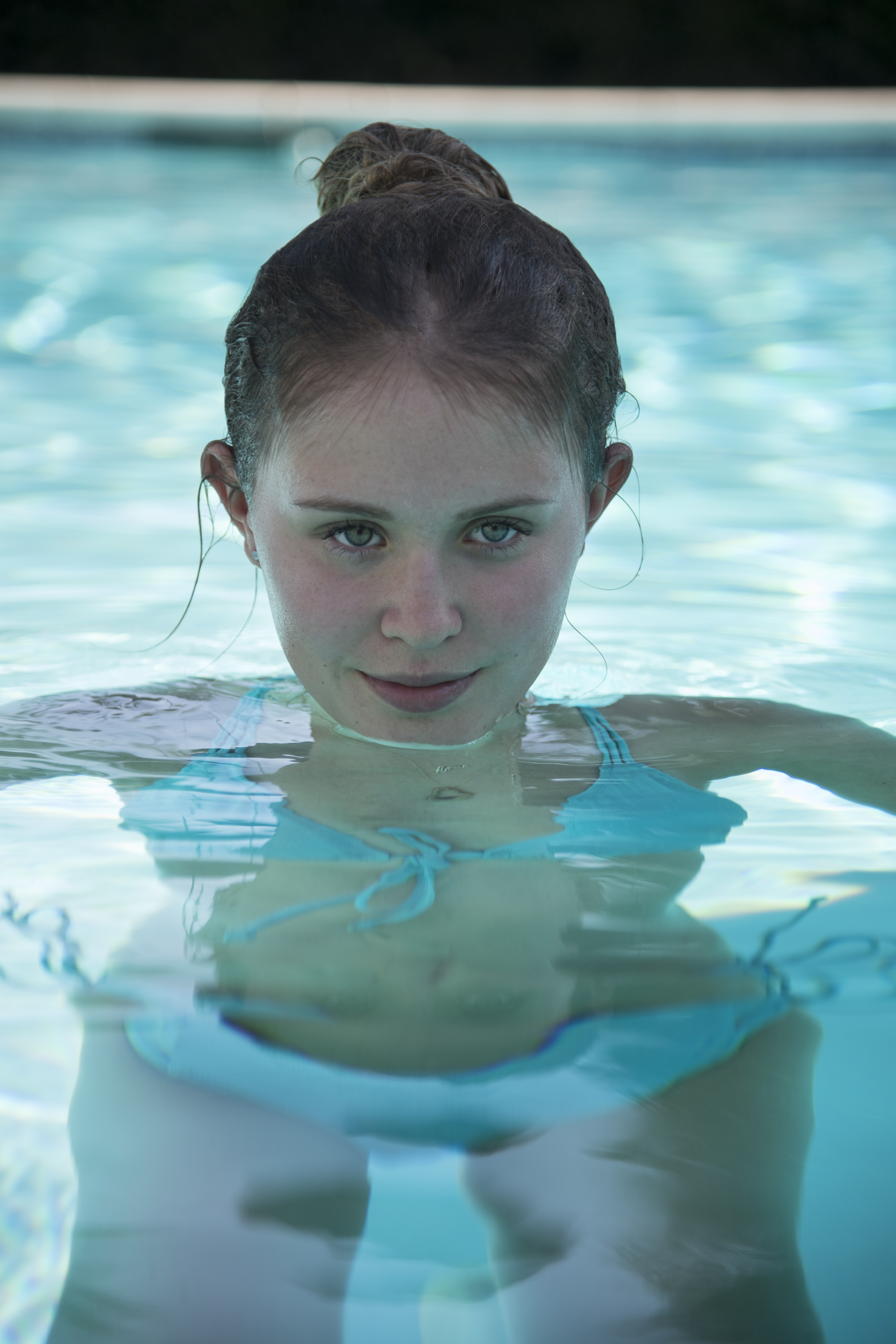 LACHANCE: It’s also a nice introduction to all these elements that are explained throughout the whole show and you get to know Camille as a person.
LACHANCE: It’s also a nice introduction to all these elements that are explained throughout the whole show and you get to know Camille as a person.
At the beginning of the show, her boss says, “You’re going to Wind Gap. You haven’t been there in so long.” It’s also building tension. She’s going back to her hometown where obviously something didn’t go right there and we’re building this nervousness and then remembering all that stuff and it’s coming back to her and there’s just that buildup that happens during that particular drive.
Jean-Marc VALLEE: We show this red caboose that is a museum piece in Wind Gap and is there someone hiding? Who is this? There were ideas found in the cutting room. Maxime found this shot where this red truck was passing, and we decided to cut to the red wagon in town. Quick flash. Let’s put the girl in. We knew we were going to use that at the beginning, all those skating point-of-views where we are wondering what are these point-of-views? What am I hearing?
The more we see these point-of-views are moving, then there’s a girl entering frame and rolling and then, “Oh, they’re on roller skates.” Then we put reflections of them through different windows and cars.
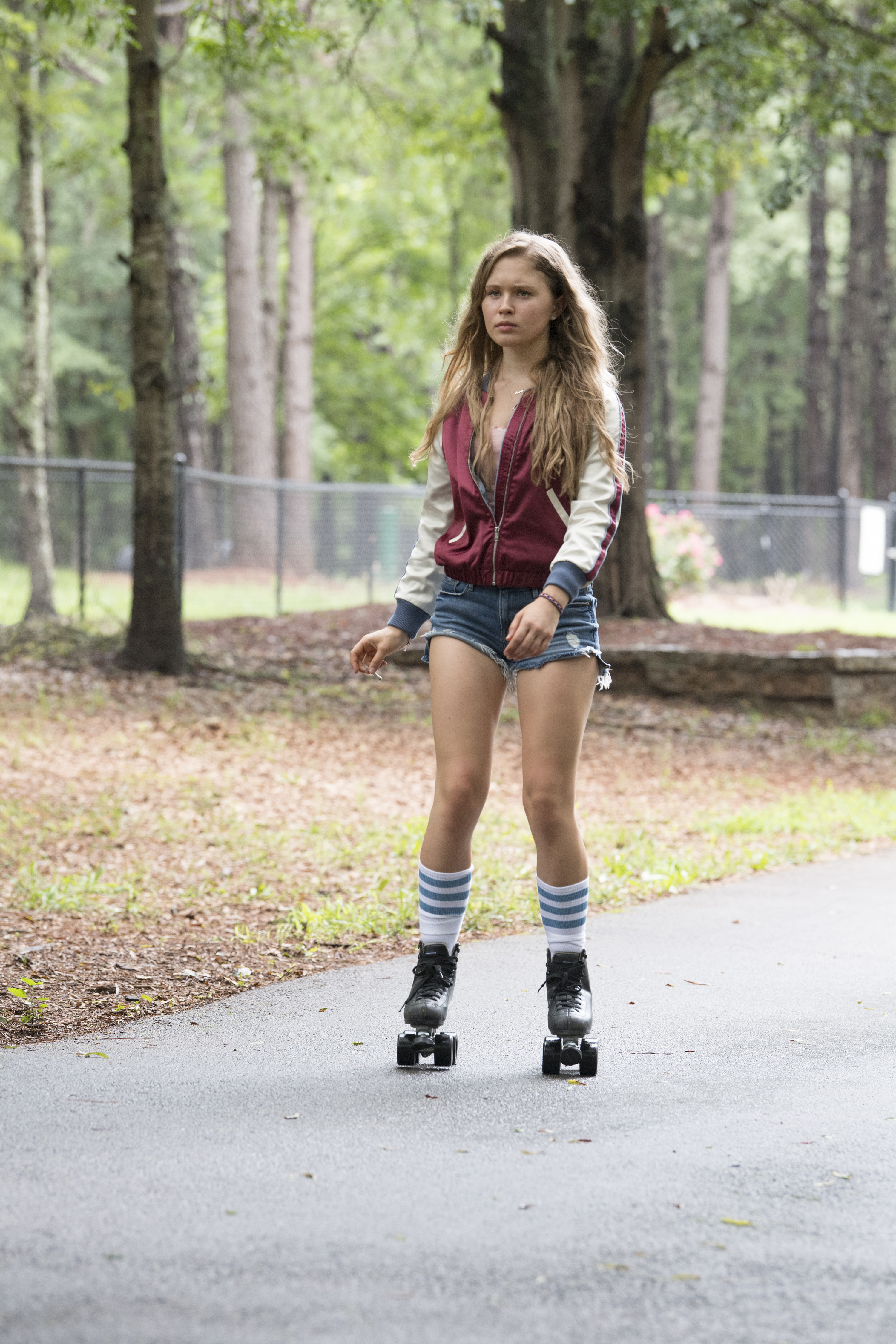 HULLFISH: I was thinking of the same thing with the value of the material between Amy waking up at the beginning of episode 1 and when she finally goes in to see her boss.
HULLFISH: I was thinking of the same thing with the value of the material between Amy waking up at the beginning of episode 1 and when she finally goes in to see her boss.
We’re seeing her sharpen a pencil. It’s all character development.
LACHANCE: You learn in that shot that she works for the newspaper.
BARBE: And that she likes cutting stuff.
HULLFISH: Since we have French speakers with us. Do you find that there is a difference in the rhythm of the language itself between English and French?
I’ve cut in Spanish before and I feel like my pacing of a Spanish language scene is different in dialogue than it is English? Or is it just the pace of the speaker?
BARBE: I think it depends on the character. Whatever the language is, it’s more about the vibe of the character and then it sets the pace of the scene.
Jean-Marc VALLEE: I would sleep on it and get back to you. (laughs).
LACHANCE: French in Quebec is a lot more chill.
LAHAIE: And we speak Frenglish. It’s a mix of French and English here.
HULLFISH: Since Amy is one of the producers on the film, do you get notes from her on performance? And do those performance notes teach you anything about editing performance?
Jean-Marc VALLEE: It didn’t happen. She was more involved as a producer in prep with casting and during the shoots with re-writes and decisions. But with post, she let go and trusted and watched the episodes and never commented on the performance.
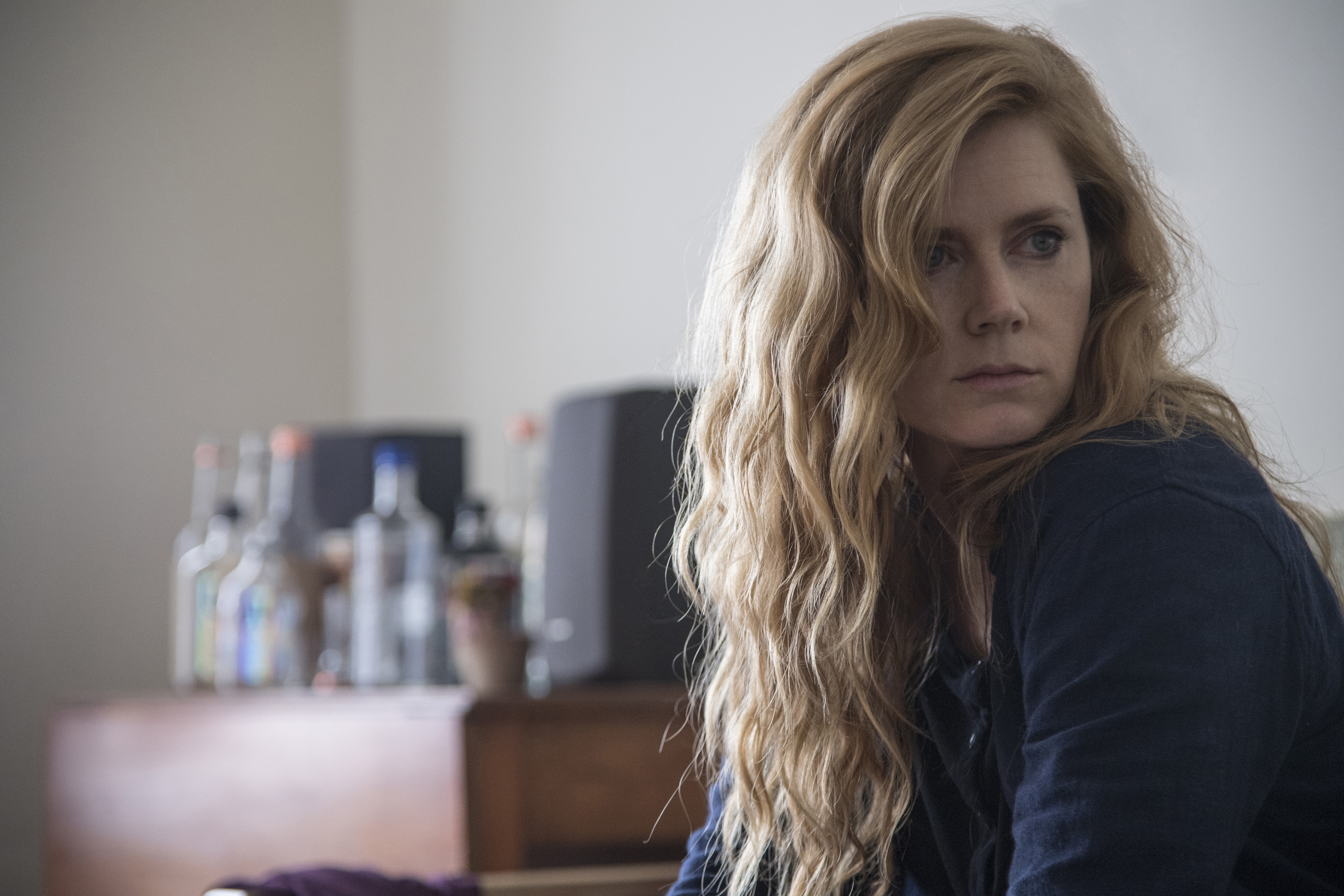 LACHANCE: And she’s so solid. Every take was really just amazing.
LACHANCE: And she’s so solid. Every take was really just amazing.
Jean-Marc VALLEE: To edit a film series with Amy Adams — no matter the scene, its wow!
LACHANCE: And for that kind of difficult character.
HULLFISH: Joe Walker had the same thing to say about her performances in Arrival.
LACHANCE: To be able to go from Enchanted to Sharp Objects, that’s incredible.
Jean-Marc VALLEE: One thing that I learned to love to do on this series — that I never got to do on feature films — cliffhangers at the end of every episode. A cliffhanger with a musical punch. We became deejays. Let’s see how we can finish so the audience wants to come back.
We loved to punch up our cliffhangers with volume and music.
LACHANCE: My favorite one was the end of episode three with Alice. It hits hard.
BARBE: The end is very harsh. You don’t expect the end and you’re frustrated. And there’s no music at the end of that.
LACHANCE: That’s true. Yeah.
HULLFISH: I’ve got a fairly technical question which is how did you organize this stuff. There’s a lot of local color and the flashbacks aren’t really part of a typical scene-based bin. Usually, everything for scene 6 goes in the scene 6 bin, but I feel that there had to have been some different organization for some of this.
BARBE: We had the best assistants and we love them so much. Everything that could possibly relate to a character or a theme, like fans.
Jean-Marc VALLEE: That became a theme in the cutting room that wasn’t present in the script and wasn’t really that present even in the shooting — though I did start to do it with the DP on set.
Then in the cutting room, it became a sound design that we loved to have here and there because it was so hot, so serving a realistic thing at the same time. We realized one day on the set that this is the first time she’d cut with a fan — her finger. It wasn’t in the book nor in the script, but we shot that moment. We created it and we gave this fan visual importance throughout the series — for sound, for realism, for ambiance, and to serve as a mystery. Why is this fan in a girl’s room?
It has the shape of an eye. Something happened in this room. What happened? I use zooms very, very rarely. We decided to zoom into the fan. it’s weird and it’s like a David Lynch thing. We’re getting out of the language of the character language which we did sometimes when the characters were imagining things.
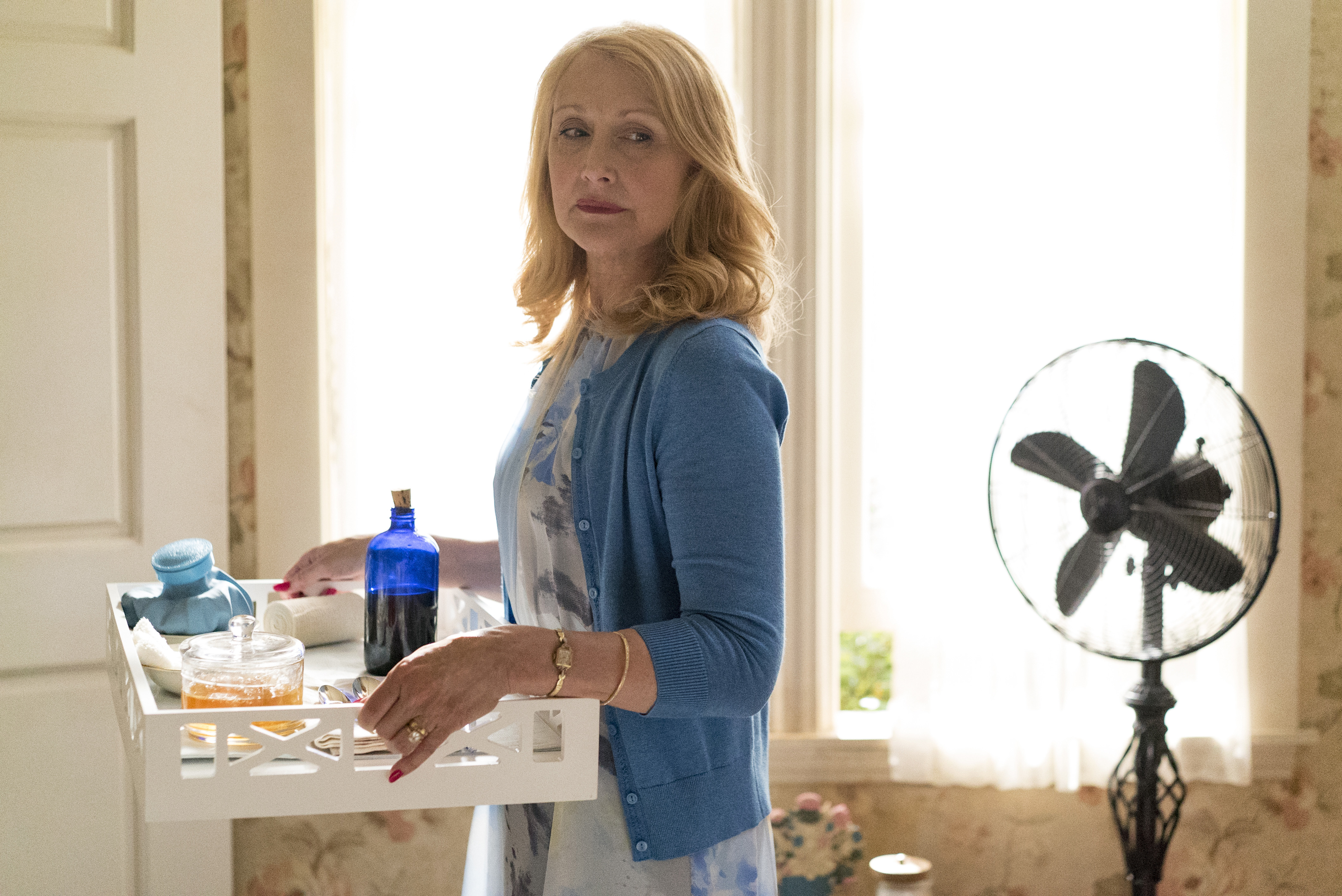 At one point we tried to go into Richard Willis’ head as much as we were going into Camille’s. We sent it to everyone and everybody reacted: “Why are we going into his head? We don’t want to see how this guy is thinking.” They were right. It’s true. So we decided not to give this guy this privilege.
At one point we tried to go into Richard Willis’ head as much as we were going into Camille’s. We sent it to everyone and everybody reacted: “Why are we going into his head? We don’t want to see how this guy is thinking.” They were right. It’s true. So we decided not to give this guy this privilege.
CHAMPAGNE: To get to your question — we had a bin of Wind Gap material. We had a bin of driving with Camille.
HULLFISH: I was thinking that the red train car is in a lot of episodes. The fans are in a lot of scenes. The back of the toilet or her flashbacks. So was there a bin of flashbacks? Or multiple bins of flashbacks?
LACHANCE: No. You would think, “In this scene, what is she thinking of?”.
BARBE: Sometimes those bins were really meant for flashbacks but the toilet was really a scene and we discover at the end of episode three what really happened. So every time we would do a flashback of the toilet, it was just from the scene. There was no flashback bin.
HULLFISH: I was thinking of eyelashes too. Obviously that was a scene, too. But you’re always seeing the eyelashes outside of that scene.
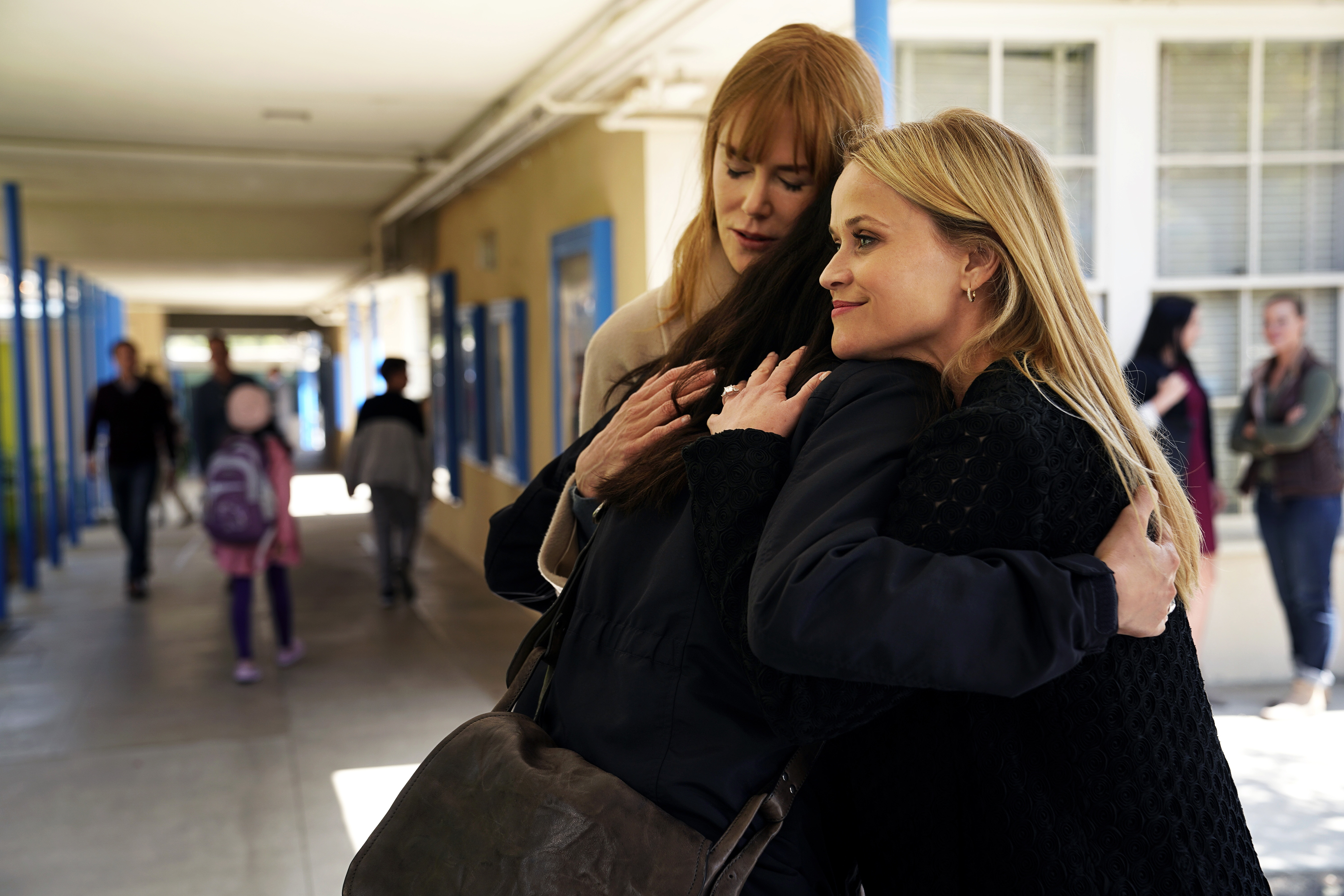
BARBE: Sometimes we would create a flashback that wasn’t meant to be. For example…
Jean-Marc VALLEE: Richard Willis. I wasn’t happy with how I shot him in the car before the funeral thinking of people throwing stuff and the water. It was so hard and I think we had 20 versions of that. We tried all kinds of stuff. It’s funny how we learned and we found stuff.
We explore and explore and don’t stop exploring and trying to respect the language and it’s just him, Why don’t we use the barbershop when he’s there in the car and thinks of the barber? He’s at the barber. He hears the barber say something.
We go back to the river where he’s trying to figure out what happened. Why was this girl found there? And then cut back to the present which is this guy waiting for the funeral to happen. It was tough. I don’t agree. I don’t remember exactly how we managed to get there, but the process to get there took three or four weeks.
HULLFISH: Big Little Lies and Sharp Objects — is it the same team of people?
Jean-Marc VALLEE: It’s almost the same. They were all on BLL except we had two more editors on BLLs.
HULLFISH: How are the shows different? Do you have to switch your brains when you change from cutting one to another?
LACHANCE: Big Little Lies is super fun and there’s a lot more comedy to it.
Sharp Objects is a dark dark dark dark world.
BARBE: There’s still comedy. Something Jean-marc really likes is when there’s something very tragic or horror-like but immediately after that is someone saying something that is a bit “off.” We like to play with that discomfort and make it fun.
That also happened on Big Little Lies, but the context was more bubbly.
LACHANCE: And there are so many more characters too.
HULLFISH: You mentioned at the beginning that you give 10 scenes to one person and ten scenes to break it down, but you also said that each person has a specialty or something that they’re good at.
Do you feel like you can play the editors like an instrument?
ALL: (laugh)
HULLFISH: Like, here’s this scene that I want to give to this specific person to match their skill or proclivities? Or is it truly just 10 scenes in order with no thought to who gets each set of scenes?
Jean-Marc VALLEE: If it has montage and music, that’s good for Maxime. He has more experience and I’ve been giving him more of that than the other. Someone is good at the really emotional stuff. Someone is good at the crazy experimental scenes.
HULLFISH: Thank you all so much for joining me. This has been fascinating.
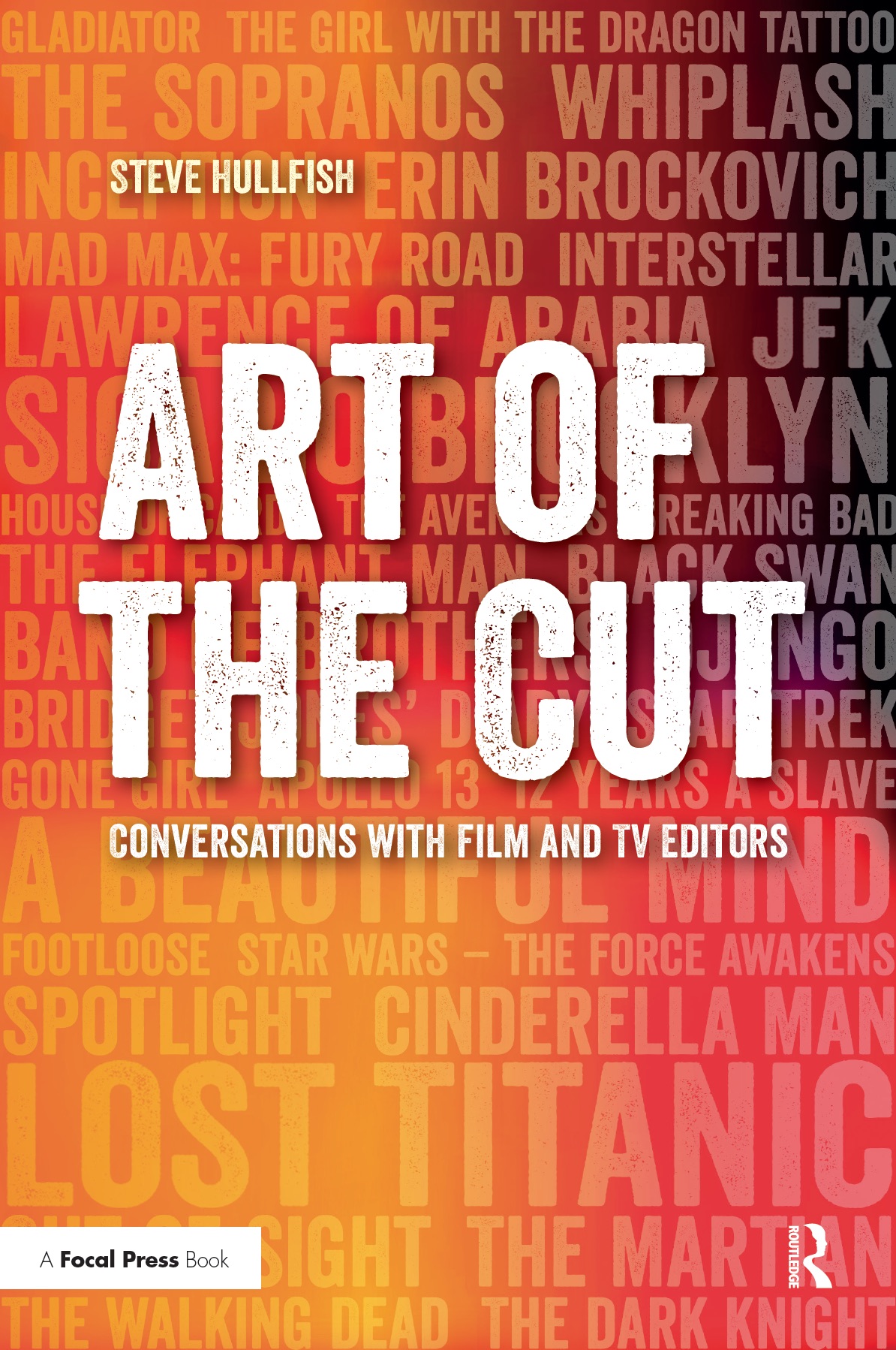 Jean-Marc VALLEE: Thank you so much.
Jean-Marc VALLEE: Thank you so much.
ALL: Thank you. Bye.
To read more interviews in the Art of the Cut series, check out THIS LINK and follow me on Twitter @stevehullfish or on imdb.
The first 50 interviews in the series provided the material for the book, “Art of the Cut: Conversations with Film and TV Editors.” This is a unique book that breaks down interviews with many of the world’s best editors and organizes it into a virtual roundtable discussion centering on the topics editors care about. It is a powerful tool for experienced and aspiring editors alike. Cinemontage and CinemaEditor magazine both gave it rave reviews. No other book provides the breadth of opinion and experience. Combined, the editors featured in the book have edited for over 1,000 years on many of the most iconic, critically acclaimed, and biggest box office hits in the history of cinema.

Filmtools
Filmmakers go-to destination for pre-production, production & post production equipment!
Shop Now